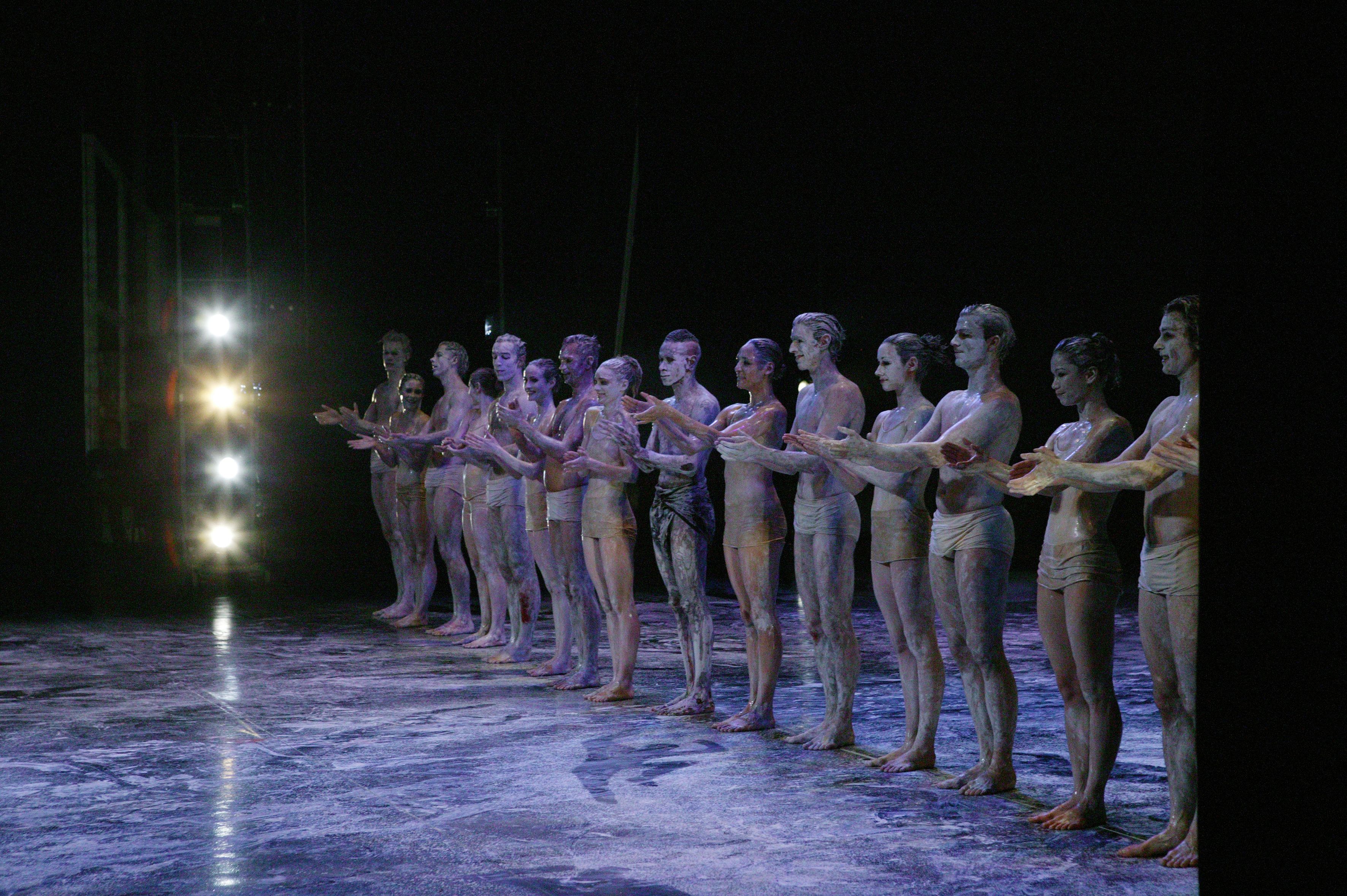Rites
Dancing towards a shared history

This exhibition and accompanying podcast celebrate the 25th anniversary of the production Rites - the first collaboration between The Australian Ballet and Bangarra Dance Theatre, which premiered as part of the Melbourne International Festival of the Arts on 29 October 1997.
Written and curated by proud Bidjara woman and former Bangarra dancer, Yolande Brown, the exhibition draws on her own experience as a First Nations performer to reflect on the cultural, political and spiritual significance of this seminal work.
The recollections of those who took part in the premiere season of Rites have also been gathered and the voices of Stephen Page, David McAllister, Frances Rings, Djakapurra Munyarryun, Steven Heathcote, Miranda Barker (née Coney) and Charles Barker can be heard throughout. You can also listen to first-hand accounts in the podcast below.
Detail of coolamon designed by Peter England in consultation with Djakapurra Munyarryun for Rites, 1999
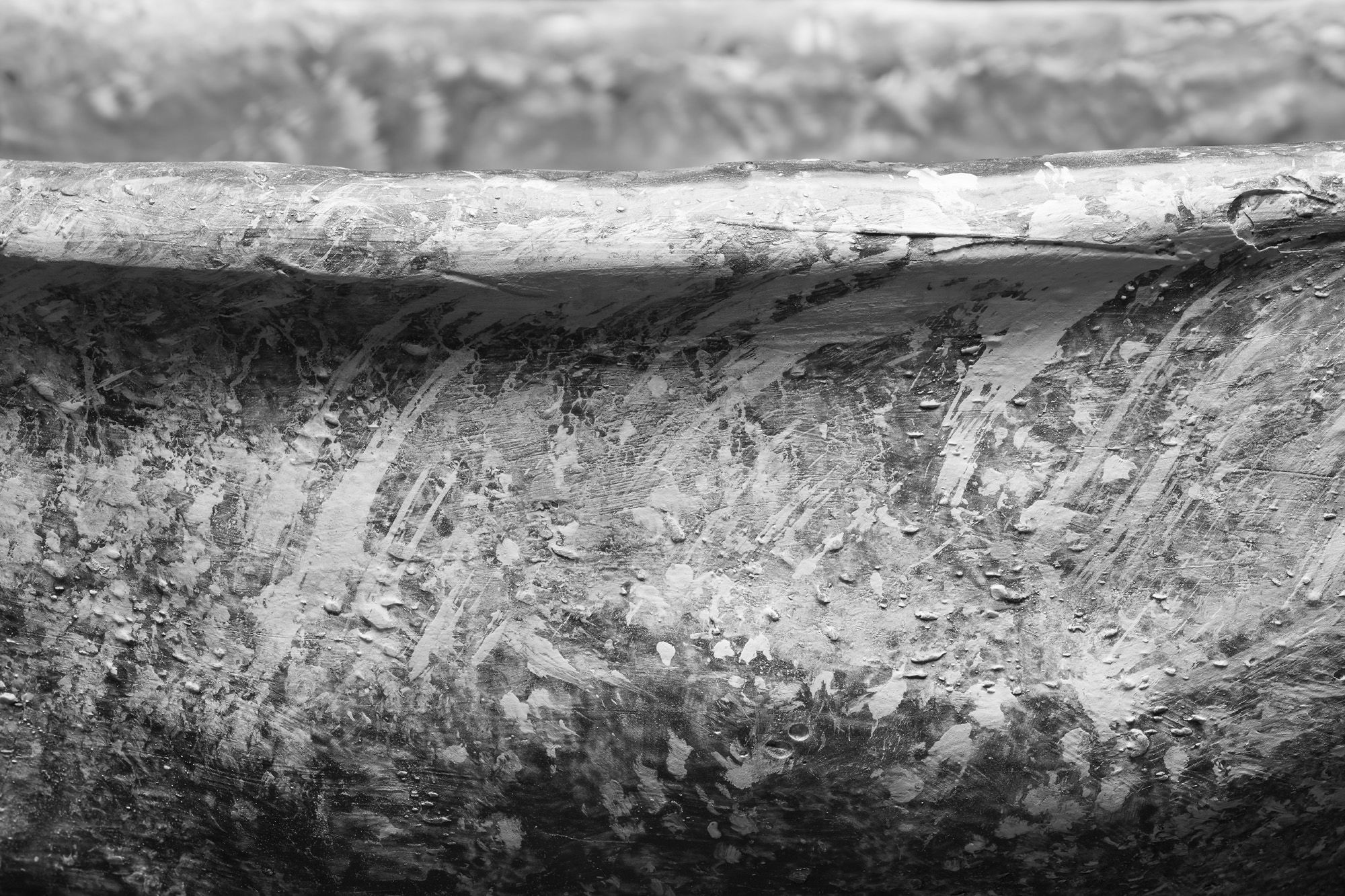
Budabai duru,
I joined Bangarra Dance Theatre in 1999 as a dance artist. My onstage Bangarra career spanned 16 years and was jam-packed full of incredible highlights including Rites which was actually the first production I performed as a new company member. It has been very special to revisit this work and look back on the deep and indelible impact it had on alumni, audiences and the amazing artform of physical storytelling.
When a First Nations artist walks into the studio, they not only carry themselves and their creative vision, they carry their responsibilities to Community, Culture and to Country. These bonds are like a myofascial network – both honour and armour, and a layering of complexity.
Yolande Brown, 2022
Yolande Brown, SPEAR, 2015. Photograph by Jacob Nash.
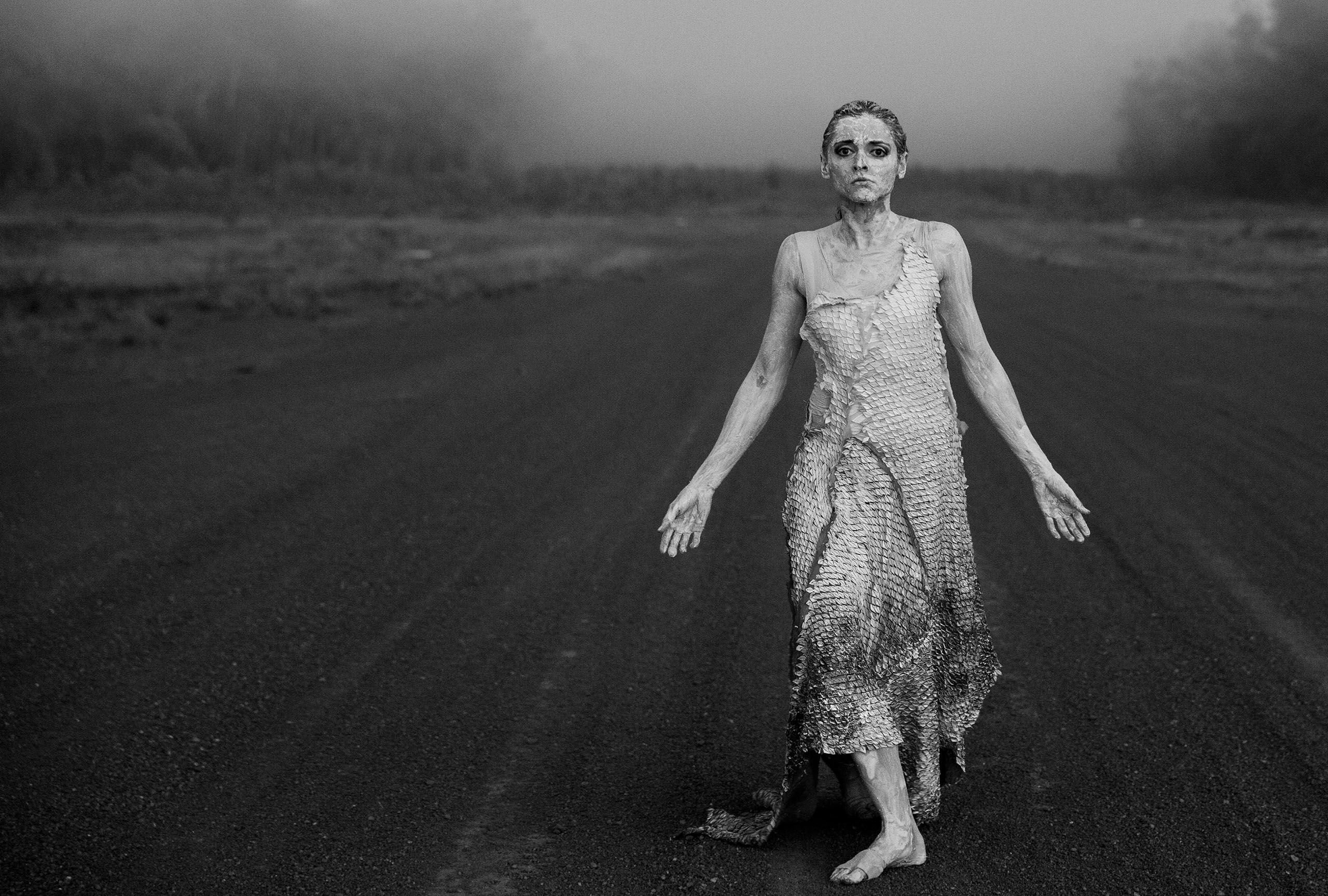

Stephen Page
In 1997, Stephen Page, choreographer and Artistic Director of Bangarra Dance Theatre, was commissioned to create a new production inspired by Igor Stravinsky's 1913 composition Le Sacre du Printemps (The Rite of Spring). The invitation came from Clifford Hocking AM, Melbourne International Festival of the Arts director at the time, and there was one condition, "Whether it be from Ayers Rock or Bondi Beach, there should be a decidedly Australian view taken when choreographing and locating The Rite anew".
Bangarra means 'to make fire' in the Wiradjuri language of central New South Wales. The dance company was formed by Carole Y. Johnson in 1989 with Stephen Page appointed as Artistic Director in 1991. Drawing on his training with the National Aboriginal and Islander Skills Development Association (NAISDA) and cultural heritage as a descendant of the Nunukul people and the Munundjali clan of the Yugambeh of South East Queensland, Page's work with Bangarra was starting to break new ground in Australian dance.
Page had already choreographed Alchemy for The Australian Ballet in 1996, but Rites was to be a collaboration between the two companies, so this time he brought the Bangarra dancers with him.
Page also invited long-time friend and colleague, Yolngu Songman and artist, Djakapurra Munyarryun, to be the cultural consultant for the work as well as taking on a creative and performing role.
Stephen Page, 2017. Photograph by Tobias Rowles.



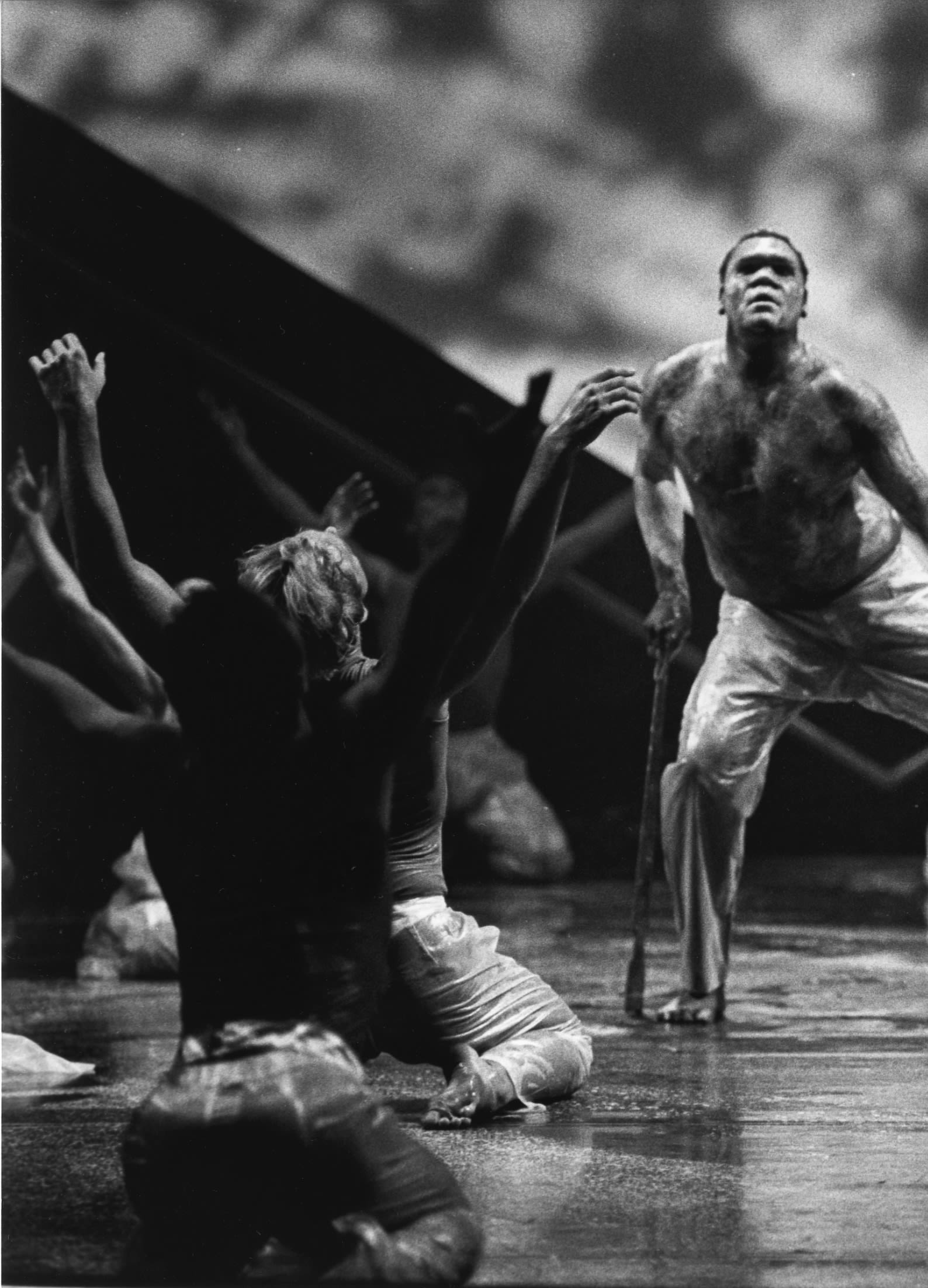
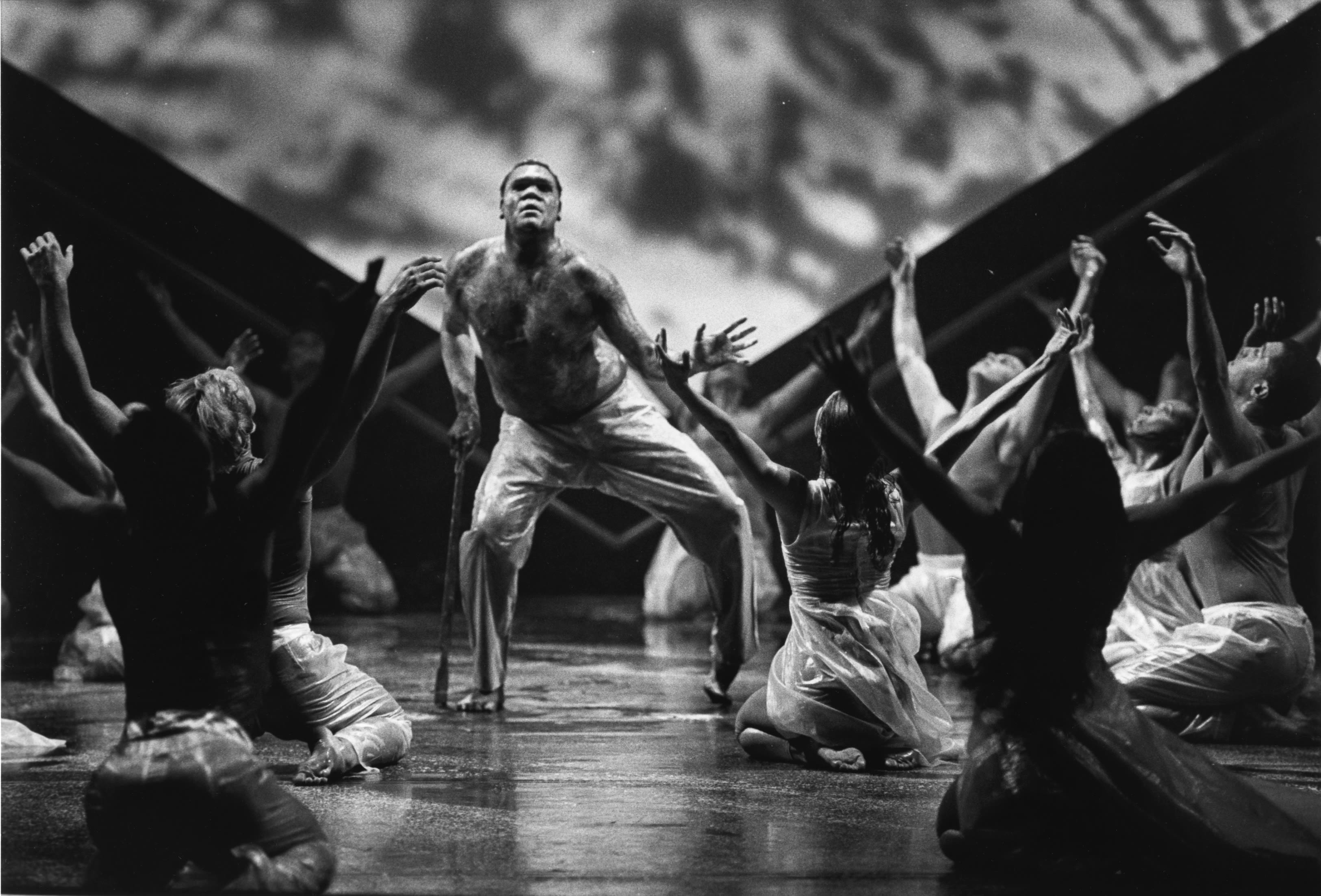
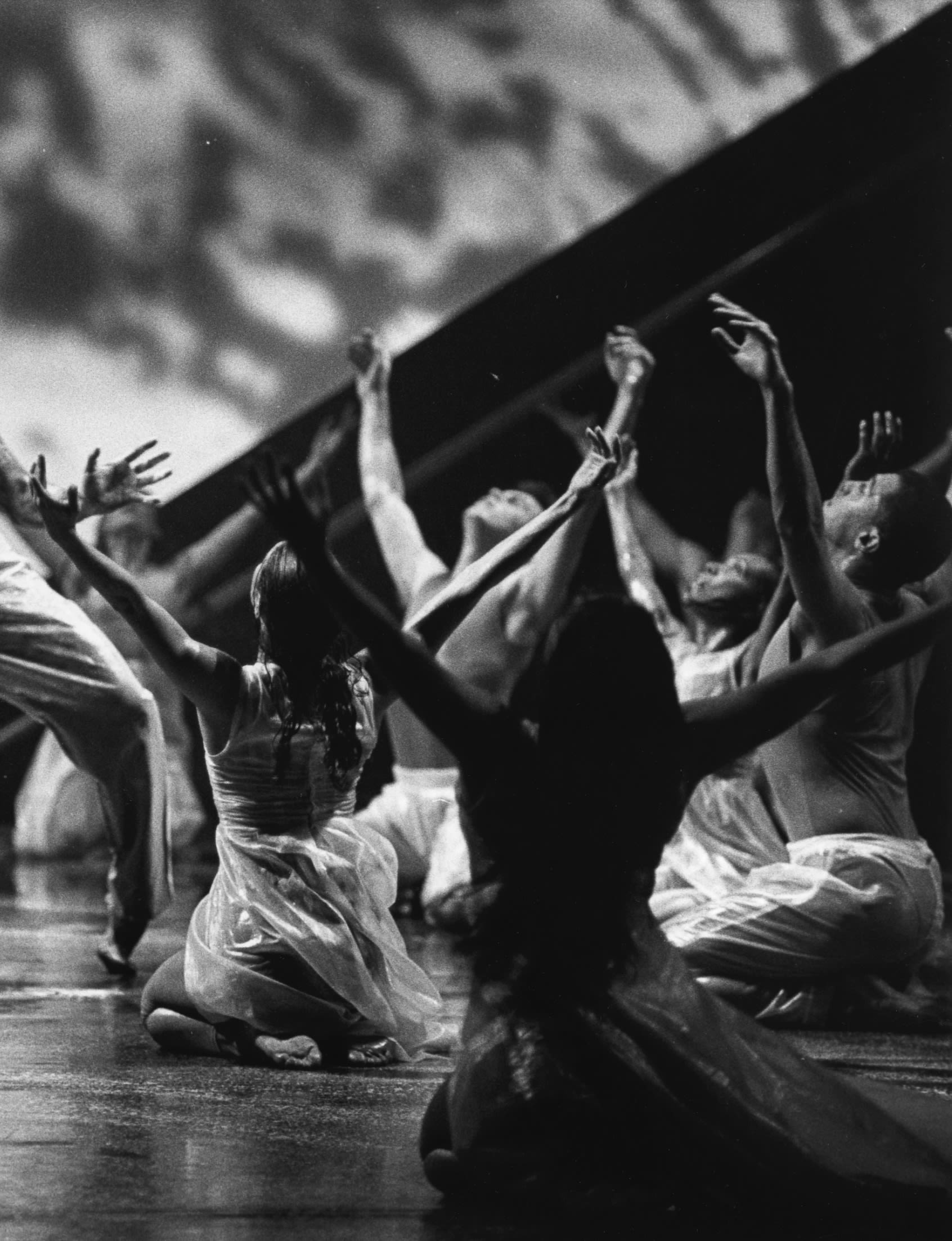
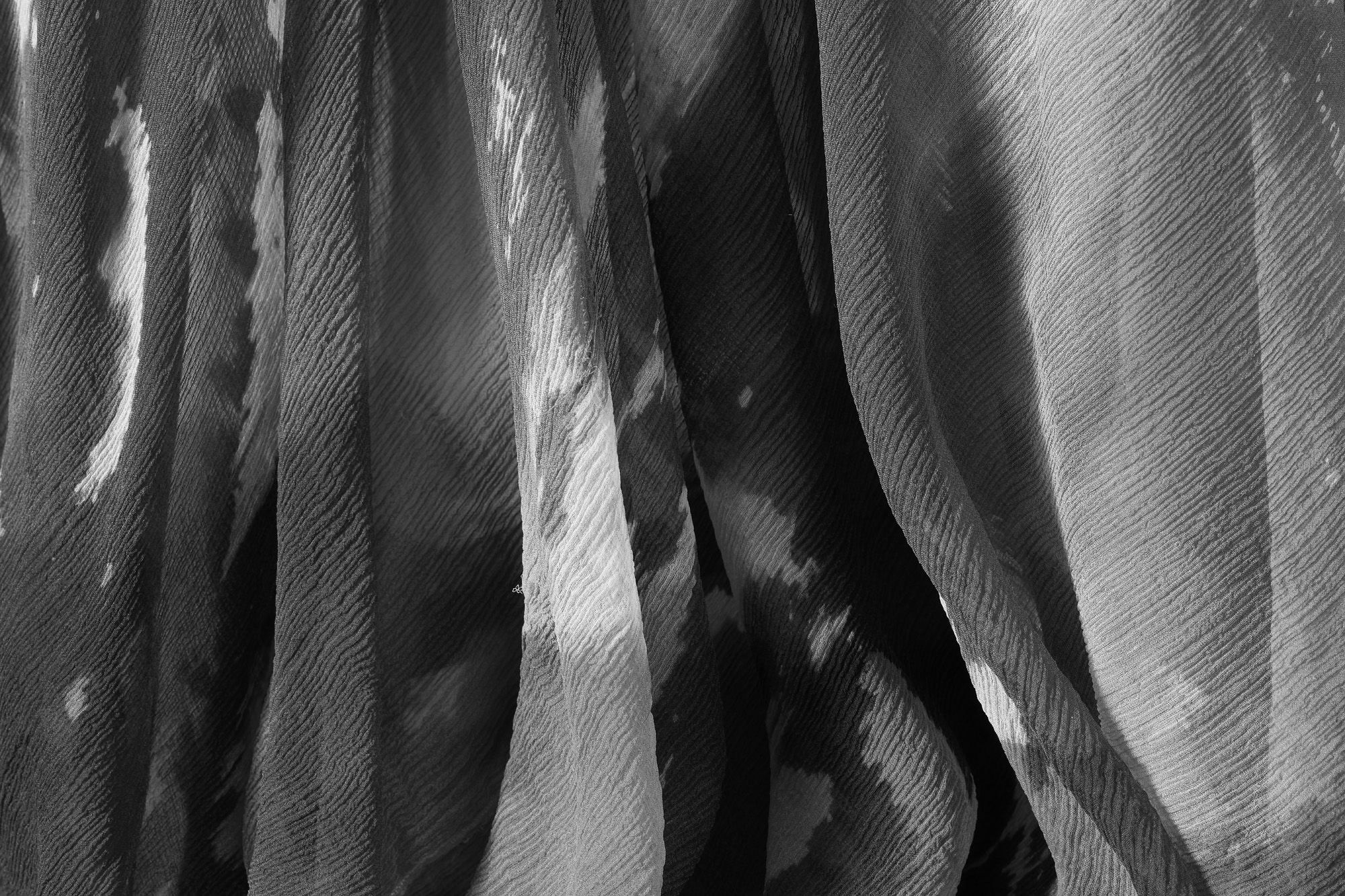
Yo, Gululu.
My name is Djakapurra Munyarryun. I am from North East Arnhem Land in the Northern Territory. I come from a little community called Dhalinybuy. I am a Songman and leader of the Wanguri Clan and I’ve worked with Bangarra Dance Theatre for
over 25 years.
Djakapurra Munyarryun, 2022
Like an emanation of rock and earth, he dominates the stage at the beginning of the work and again at its closing.
Shirley McKechnie, The Bulletin, 1997
When you walk with us you will hear that time is not linear
The future calls out to the past
And the present provides the keys for the interweave
You will feel the body as a breathing knowledge vessel
A time keeper
Beating in and out of the earth
Through generations
An extension of Country
Yolande Brown
Following the 1997 Bringing Them Home report, and hearing the revealing stories of Indigenous children being taken from their families, the Australian Government under Prime Minister John Howard MP, rejected a public call for an official apology to those children and their families. At the 1997 Australian Reconciliation Convention, Indigenous delegates turned their backs on Prime Minister Howard, and on the government's continued justification for unaccountability.
In the wake of this political scenario, Stephen Page walked into The Australian Ballet studios with the Bangarra Dance Theatre dancers by his side. He stood as an extension of his kin and his Black arts community.
But was the community ready?
Was this the right time for Page and Bangarra to 'walk together' with Australia’s national ballet company?
Stephen Page in Patyegarang rehearsals, 2014. Photograph by Jess Bialek.
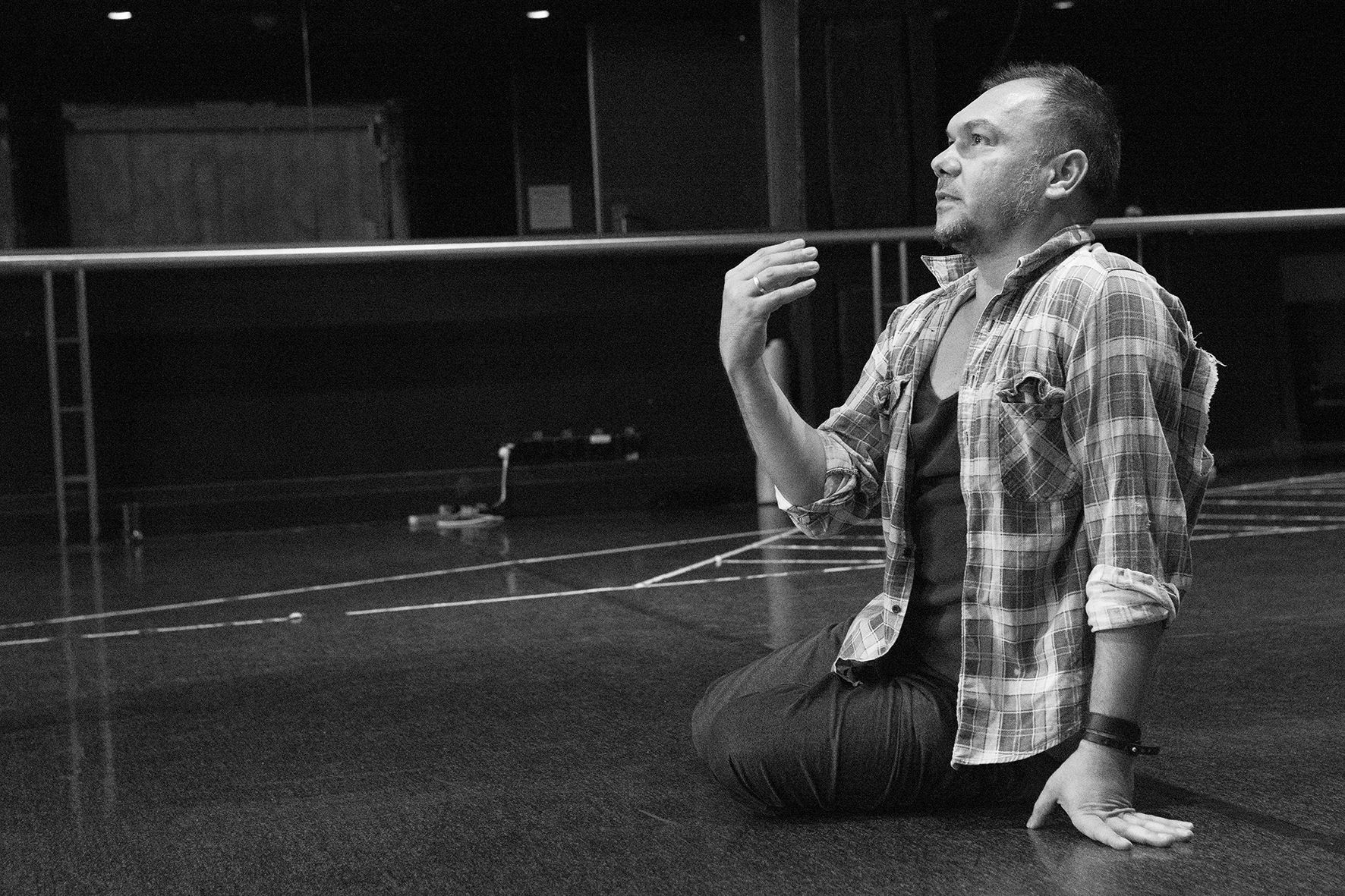
Like the six seasons in Yolngu culture, each with their own temperatures and temperaments, Rites explored six different,
yet interconnected themes: Awakening, Earth, Wind, Fire, Water and Dreaming.
These elements are central to the human spirit, to our being and belonging, here, on Country.
And like the shifting seasons, these sections grew out of the changing energies within the music.
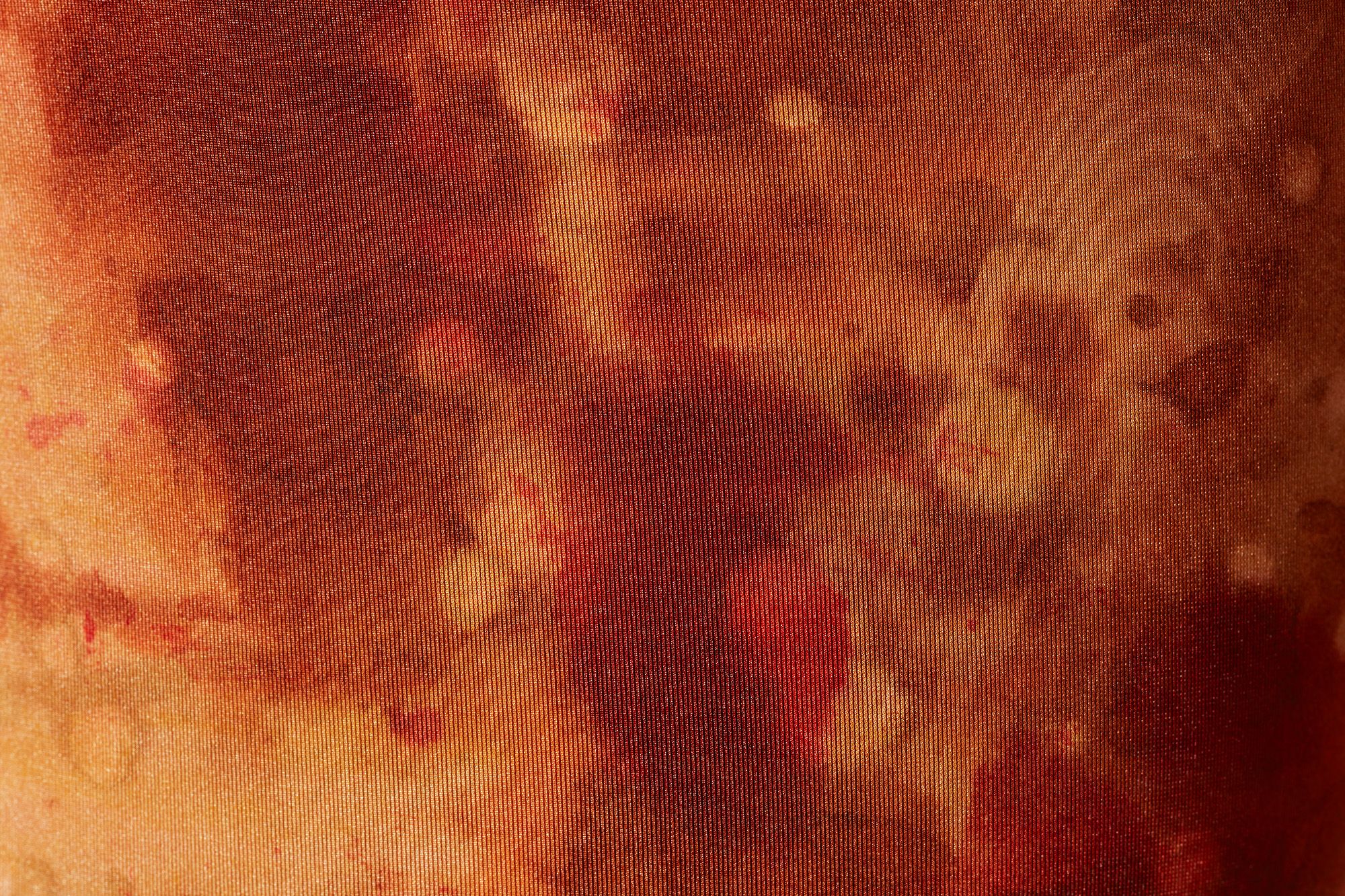
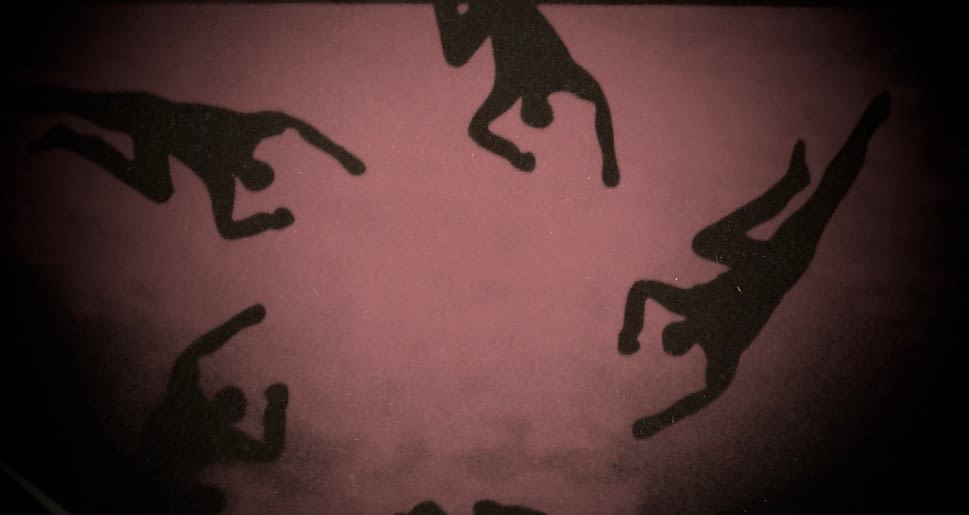
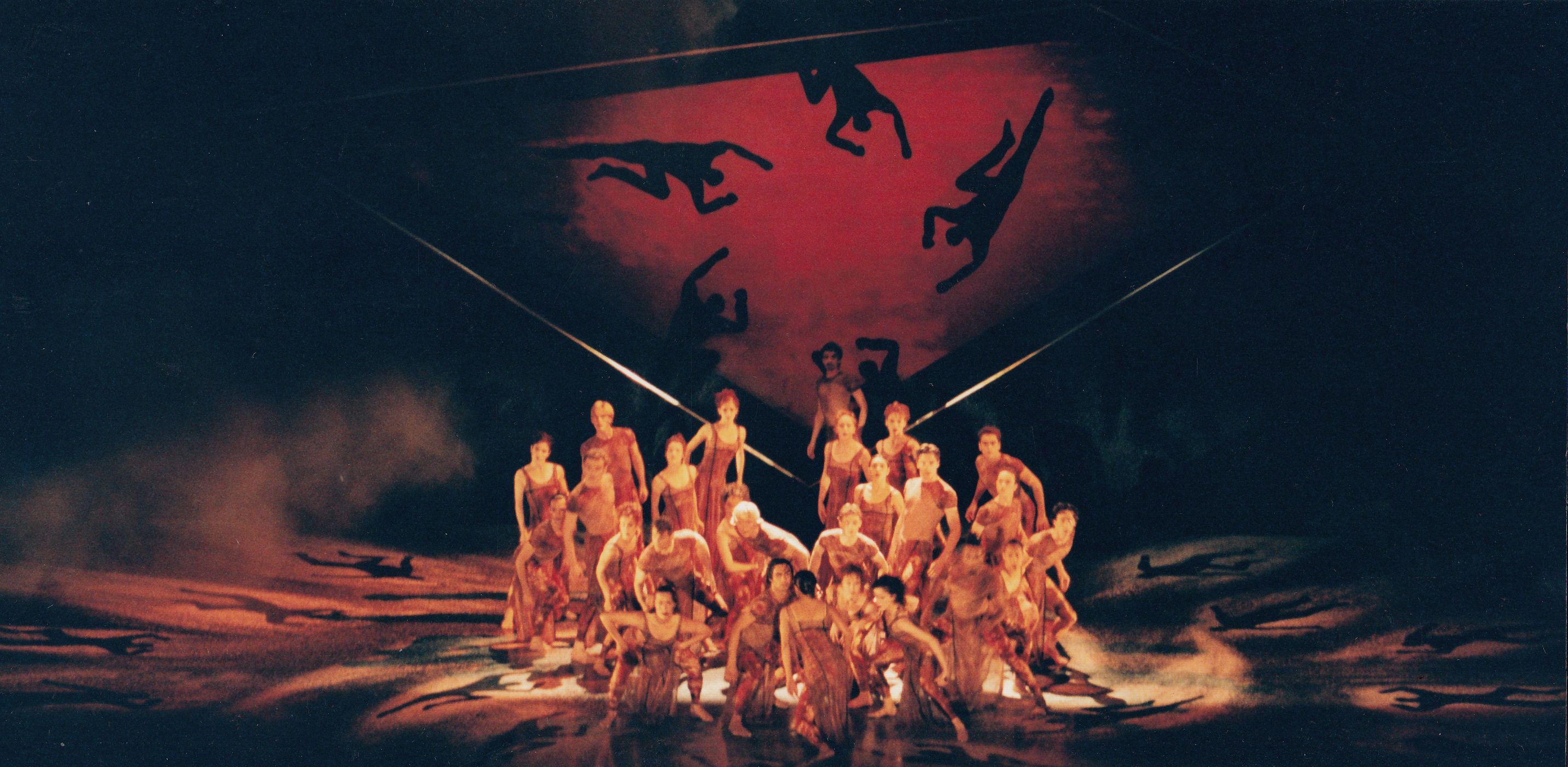
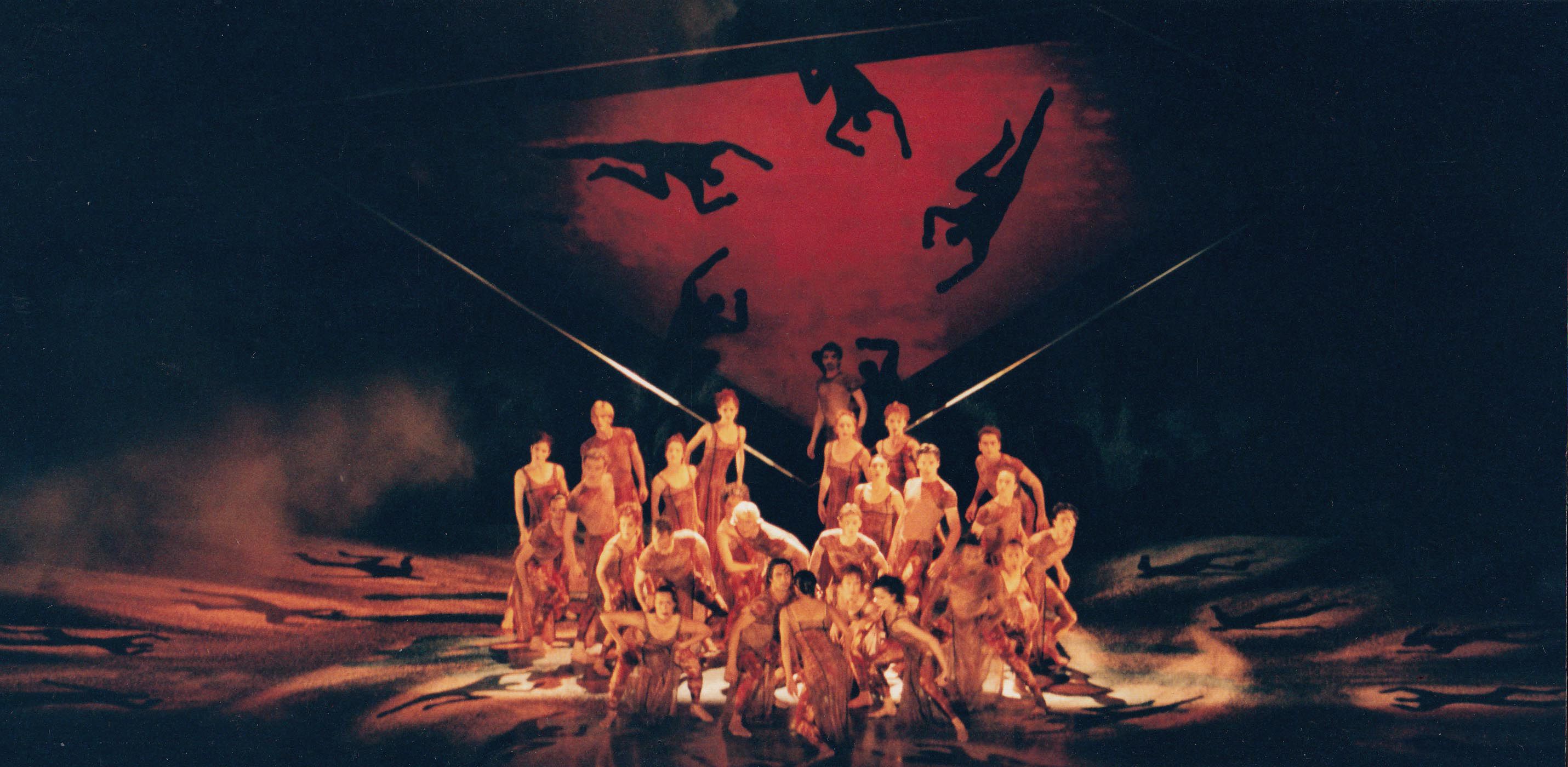
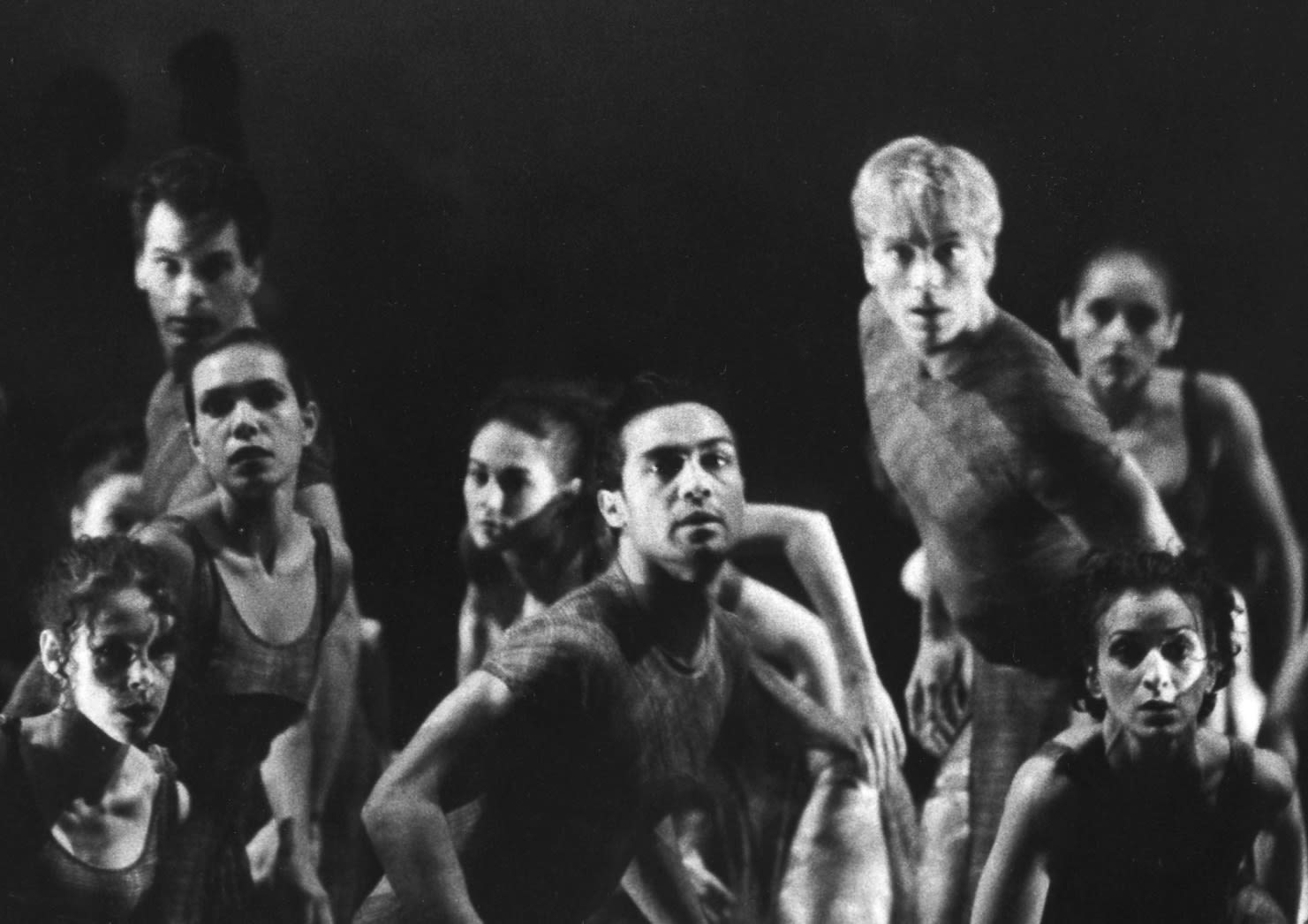

A W A K E N I N G
The production began in silence. As the light grew, like the first morning light, Djakapurra rose from the earth, awakening Country. Following his cultural vocal call, the opening bassoon solo began.
Bangarra's signature is evident, as Djakapurra Munyarryun emerges from a circle of bodies. His every action is so steeped in intent that he transports us to another dimension.
Hilary Crampton, The Age,1999
That sense of bringing people together – Clanship.
Stephen Page, 2022
Trusting his instinct and his vision for the work, Stephen guided the Bangarra Dance Theatre team towards an exciting, supportive space created equally by both companies, centred around reciprocity. The energy inside this creative cave was sacred. It was a place to share openly, to learn, to look both through the past and towards the future, and to be moved by the interweave of three distinct, and extraordinary worlds – Bangarra, The Australian Ballet and The Rite of Spring.
We were looking at it ... from a humane way, even though we were in this political world.
Stephen Page, 2022
We were all learning.
Stephen Page, 2022
For both dance artists and audiences alike, Rites brought about an awakening. With Stephen at the helm and Djakapurra guiding the spirit of the work, Rites was unlike any mainstream dance production ever created before.
There was the bigger picture story and these little micro stories that were changing people’s lives. I loved seeing Djakapurra in the corner, with the boys laughing, or he’d be in the dressing room before the show teaching some guy Yidaki.
Frances Rings, 2022
To this day, many people living in Australia have not engaged in, nor experienced, genuine relationships with First Nations people and Country. First Nations perspectives and ways of being are largely not visible in contemporary society, as the colonial-settler system has supplanted these voices, reinforcing the disconnection between people and place. Subliminally, Rites opened people's senses to new possibilities through sharing and learning together and building cross-cultural relationships.
I had some of the ballet dancers come up to me and say, "Look, we don't mean to be rude, but we'd never met an Aboriginal person before", and I thought that was just so innocent – they were really wanting to learn.
Stephen Page, 2022
Each one of us had our own transformation, our own reckoning about what it was to be an Australian dancer, an Australian artist and how to authentically carry the story of Australia, of our culture, and how we care for that [as] something that we do together.
Frances Rings, 2022
Slowly, things shift and awaken, as the importance of recognition, understanding and respect for these cultures and deep knowledges are realised.
From both companies, there was reciprocated esteem for the degree of discipline, training, devotion, and the total immersion it takes to become a master of communicating through dance.
[Djakapurra] loved the ballet – he’d stand at the window and watch the class. All of it made sense to him – this is the house where classical is in its element – this is their ritual ... this is their sacred.
Stephen Page, 2022
The roots of two, disparate, physical languages entwined to create something both captivating and truly unique.
It became a new expression of Australian dance.
Frances Rings, 2022
Rites, 1997. State Theatre, Arts Centre Melbourne. Footage courtesy The Australian Ballet and ABC Library Sales. STRAVINSKY: The Rite of Spring performed by Australian World Orchestra, Zubin Mehta Conducting. Courtesy ABC Classic. Licensed by Australian Broadcasting Corporation. The Rite of Spring by Igor Stravinsky is used by permission of Hal Leonard Australia Pty. Ltd, exclusive agents for Boosey & Hawkes Music Publishers Ltd.
Rites, 1997. State Theatre, Arts Centre Melbourne. Footage courtesy The Australian Ballet and ABC Library Sales. STRAVINSKY: The Rite of Spring performed by Australian World Orchestra, Zubin Mehta Conducting. Courtesy ABC Classic. Licensed by Australian Broadcasting Corporation. The Rite of Spring by Igor Stravinsky is used by permission of Hal Leonard Australia Pty. Ltd, exclusive agents for Boosey & Hawkes Music Publishers Ltd.


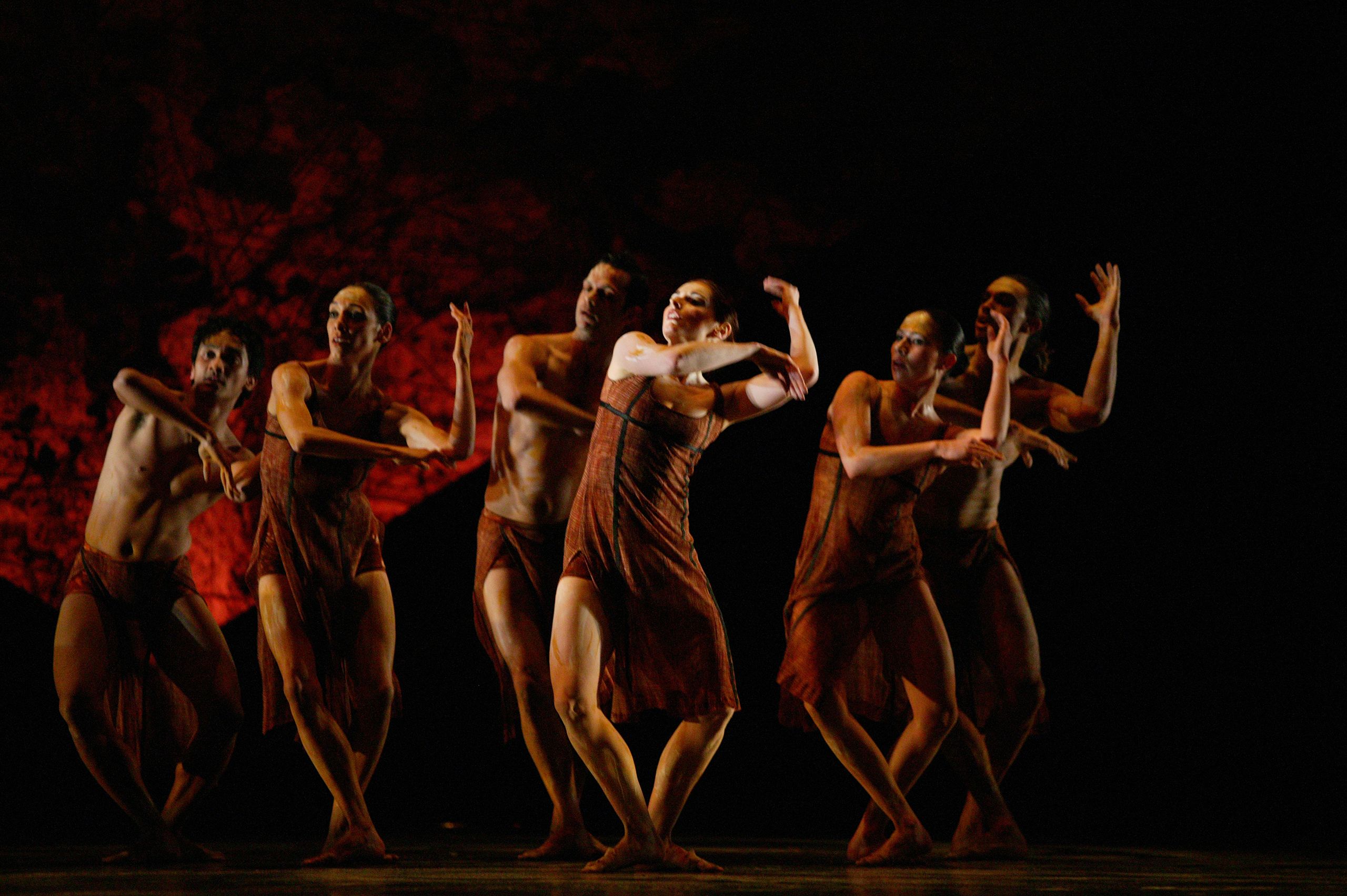
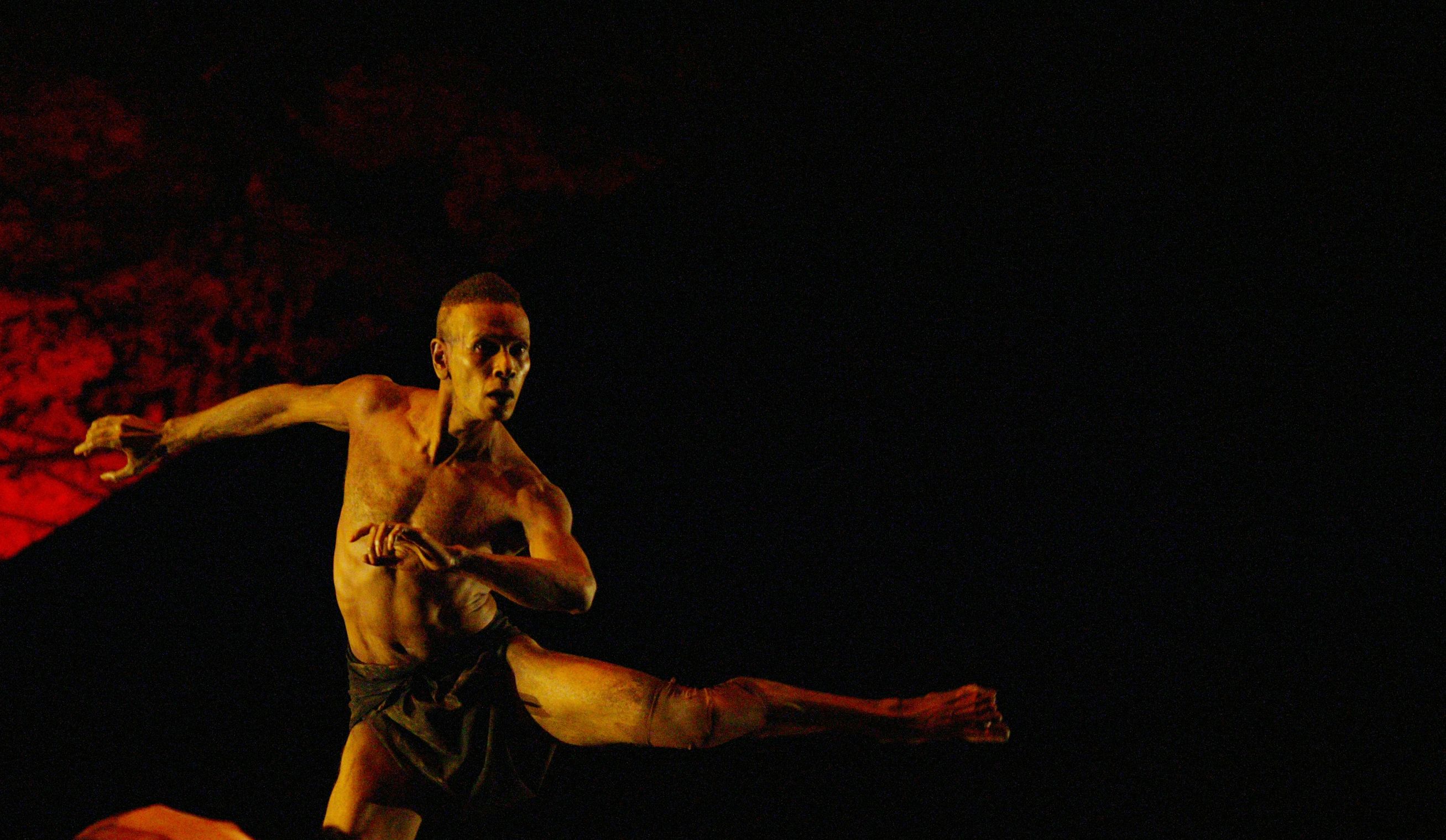

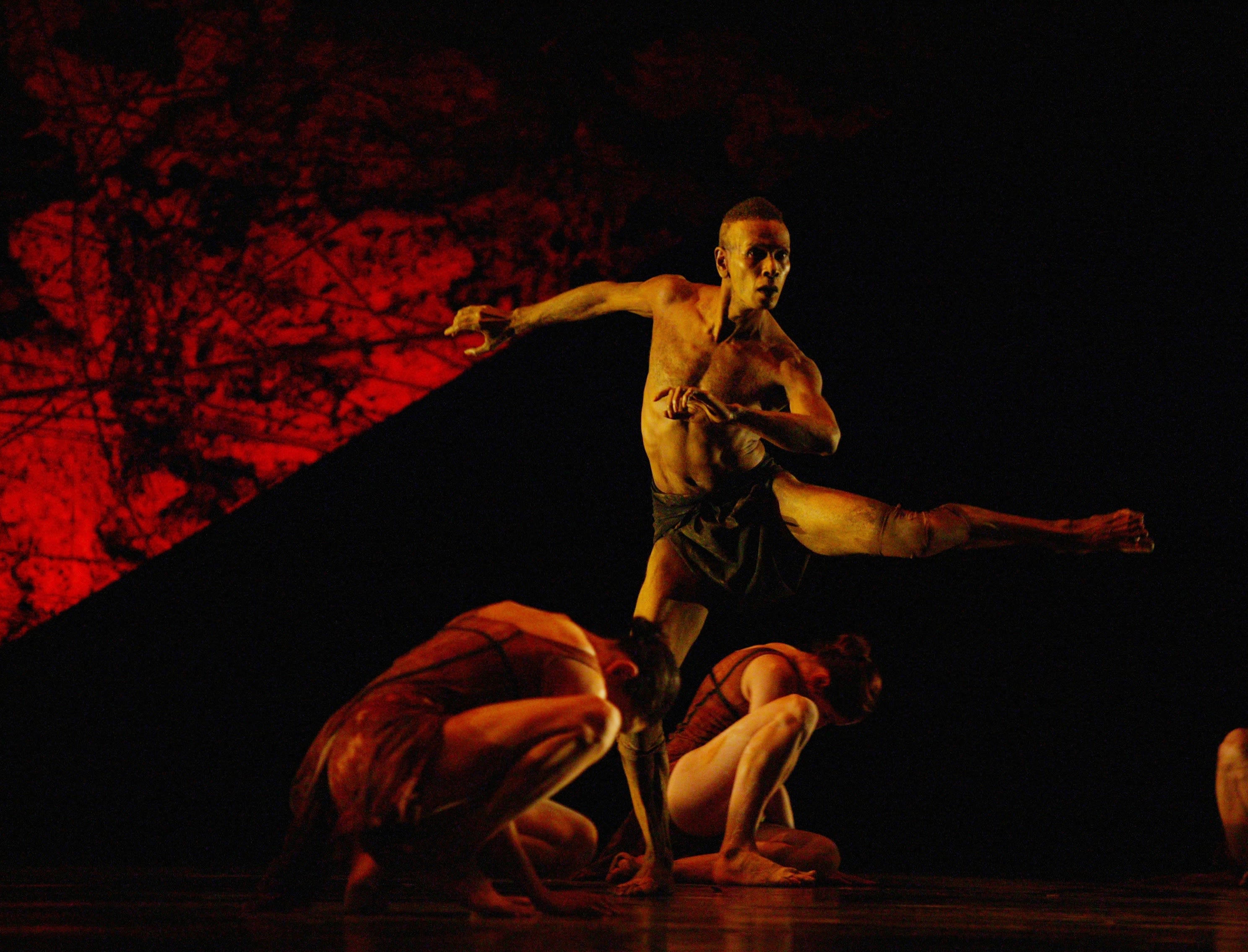
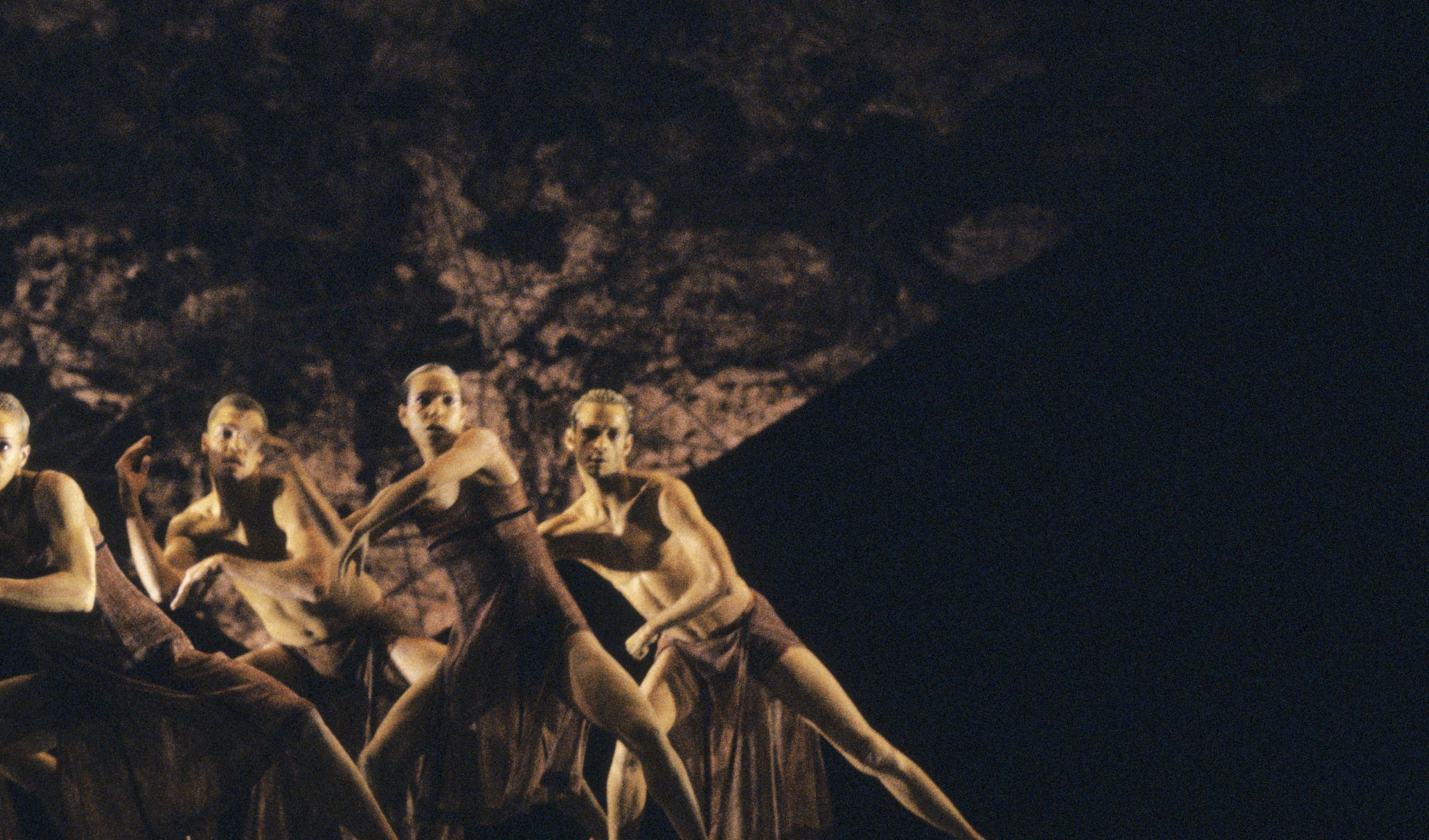
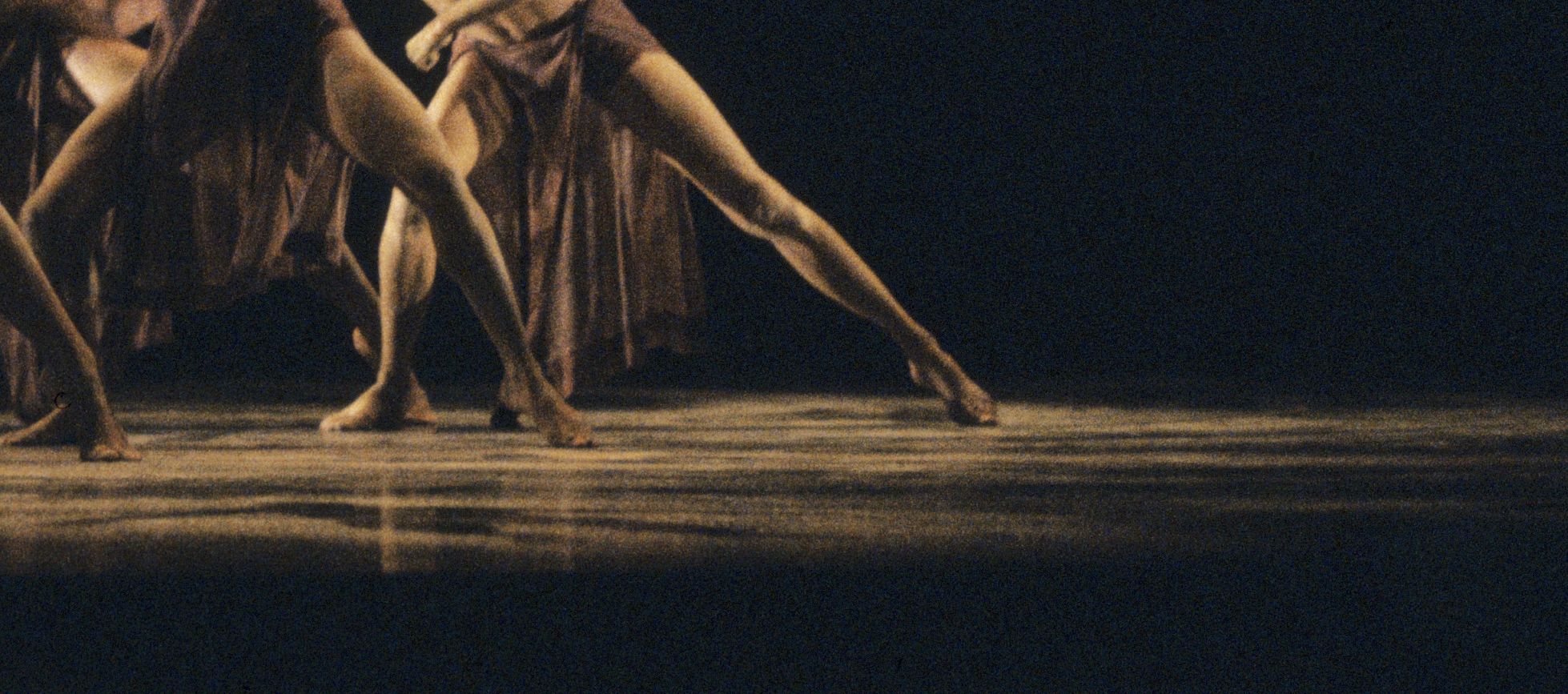
All of the dancers' bodies were arranged around the floor, almost like they were submerged into the earth, emerging out of the ground.
Peter England, Set Design, Rites, 2022
E A R T H
Igor Stravinsky created The Rite of Spring in two large sections, the first of which he named The Adoration of the Earth, a name befitting First Nations beliefs and protocols.
The section Stephen Page called Earth was danced by Bangarra Dance Theatre dancers. The music was a dynamic and rhythmical interplay between traditional instruments and non-traditional patterning. Breathing in and out of the earth, Bangarra's artists drew on their unique style where cultural dance converses with contemporary form.
It blew me away – the incredible layers of storytelling that are built into that score – it felt like it was taking you onto Country.
Frances Rings, 2022
The music's sheer power resonated with the deepness of First Nation peoples' connection to Country and the potency of Land – the sacred sites, the great monoliths, the petroglyph galleries, all within a timeless landscape.
Australian First Nations cultures are the oldest continuing cultures in the world. With over 250 different language groups, First Nations peoples are as diverse as the topography of Country to which they belong.
Country informs being. It is teacher, it is healer, it informs communication and language, and is integral to cultural practices. Songlines call and respond to Country, as they crosshatch the land, interconnecting deep knowledge systems and practices.
The simplicity of connection to land and people ... the elementary world ... how important that is to the Aboriginal kinship system.
Stephen Page, 2022
For First Nations peoples, art and cultural practice go hand in hand and are in continual conversation with Country. Art works as a knowledge tool, enhancing people's ability to thrive on this ancient continent. Songs, music, storytelling, dance, painting, engraving, ceremony and celebration encode understandings of 'being' for First Peoples and provide systems for knowledge transmission.
You could see the ballet dancers – the framework in their minds were recalibrating ... So you move this way because the story is that you’re collecting the earth and the earth becomes the paint in which you put on your body for ceremony, and this ceremony is telling stories that have been passed onto you ... It was fascinating to be given the responsibility to help them find a new way into this artform.
Frances Rings, 2022
Like Yothu-yindi, the Earth is Mother and we are child. There is power in the reciprocal responsibilities of caring for family and caring for Country. But what happens to people when fences are built, boundaries installed, people forcibly relocated, and practices that activate Country and Culture are outlawed?
Just the mere fact that it went on stage called Rites and not The Rite of Spring kind of says it all.
Peter England, Set Design, Rites, 2022
[For] any Indigenous artist, it’s really hard to separate your artform from politics because everything we do is a response to that. We use our stories to give audiences the perspective of Black experience and how we negotiate our cultural – our urban and our historical – responsibilities and experiences, all in the same space at the same time. There’s all that going on – it’s multidimensional.
Frances Rings, 2022
The Interweave
The history and cultural practices of Australia's First Peoples are born from the inextricable and potent union between People and Country. These connections are powerful despite and beyond the violence and trauma of the colonial invasion. They are the epigenetic expressions that resound through cellular memory, invigorating resilience, connecting people to their ancestors, cultural practices, Songlines and Dreaming.
Since the commencement of the colonial-settler project that began on 26 January 1788, the First Peoples of the continent now known as Australia have endured government policies and legislation that has impacted their ability to practice their cultures, speak their languages and to carry their lore.
Since the Australian High Court's 1993 Mabo decision, that declared the doctrine of Terra Nullius as illegitimate political institutions have bound lore to law in a tacky, intangible matrix.
Whether consciously or incidentally, this web of culture and politics is continually navigated by First Nations people.
During that time, in that room, we weren’t thinking we were being political but [the production] had such big ramifications – we didn’t understand it at the time, but I look back now and think, "that was pretty phenomenal"...
Frances Rings, 2022
Rites, 1997. State Theatre, Arts Centre Melbourne. Footage courtesy The Australian Ballet and ABC Library Sales. STRAVINSKY: The Rite of Spring performed by Australian World Orchestra, Zubin Mehta Conducting. Courtesy ABC Classic. Licensed by Australian Broadcasting Corporation. The Rite of Spring by Igor Stravinsky is used by permission of Hal Leonard Australia Pty. Ltd, exclusive agents for Boosey & Hawkes Music Publishers Ltd.
Rites, 1997. State Theatre, Arts Centre Melbourne. Footage courtesy The Australian Ballet and ABC Library Sales. STRAVINSKY: The Rite of Spring performed by Australian World Orchestra, Zubin Mehta Conducting. Courtesy ABC Classic. Licensed by Australian Broadcasting Corporation. The Rite of Spring by Igor Stravinsky is used by permission of Hal Leonard Australia Pty. Ltd, exclusive agents for Boosey & Hawkes Music Publishers Ltd.
That drive and that energy of just wanting to change people’s perspectives. We were wanting to channel into that and explore that.
Stephen Page, 2022
Stephen Page in Patyegarang rehearsals, 2014. Photograph by Jess Bialek.

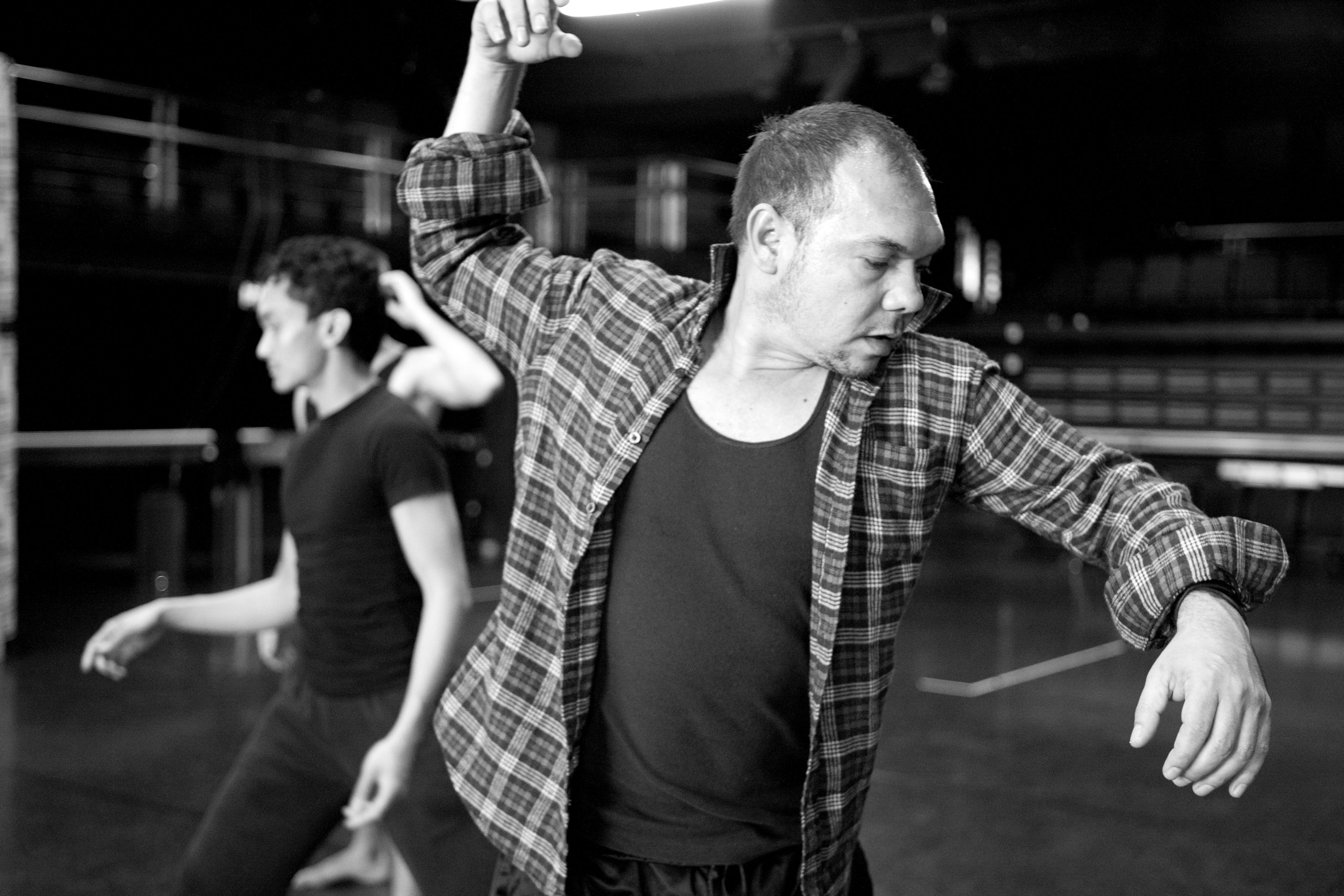
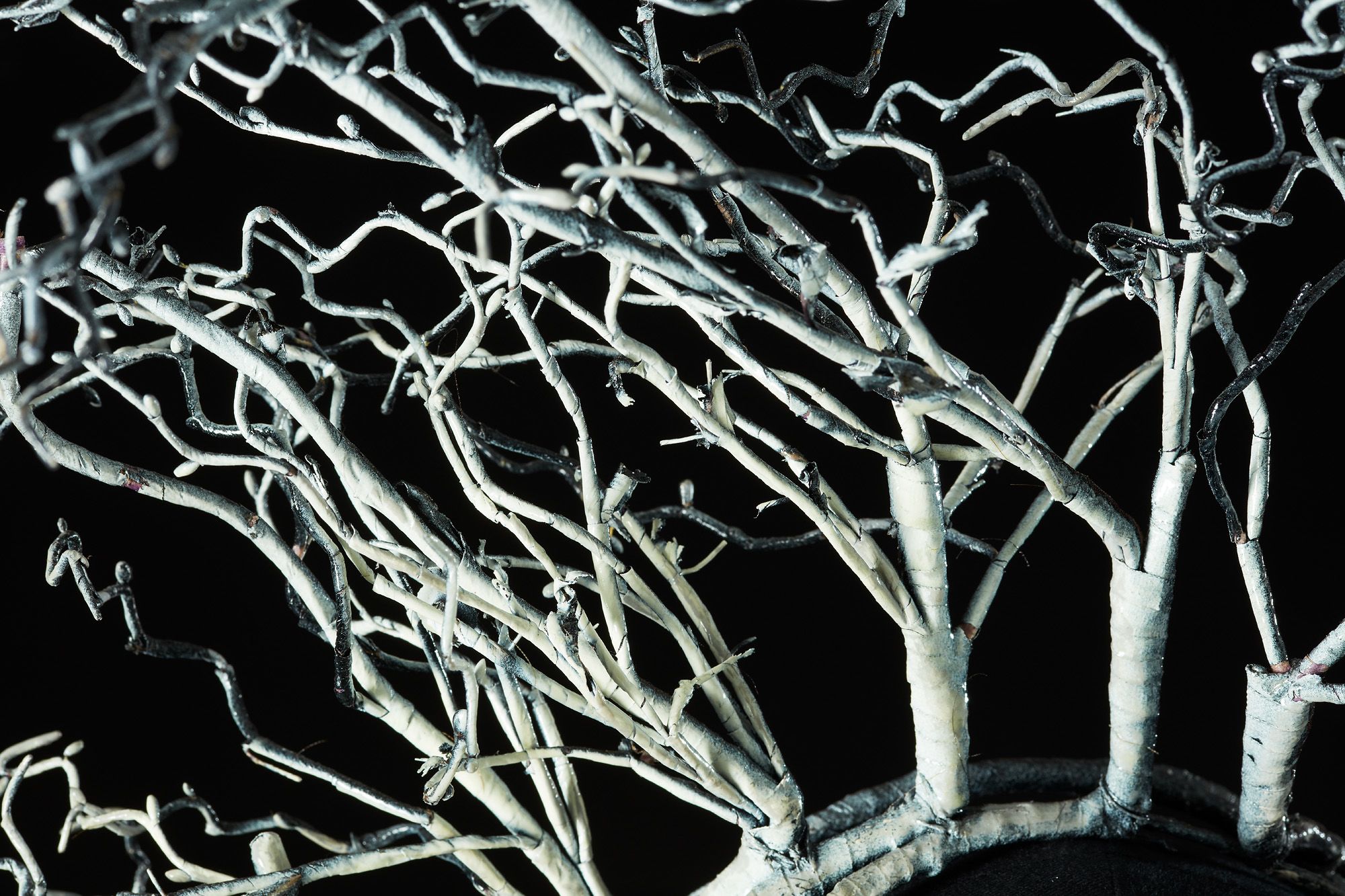
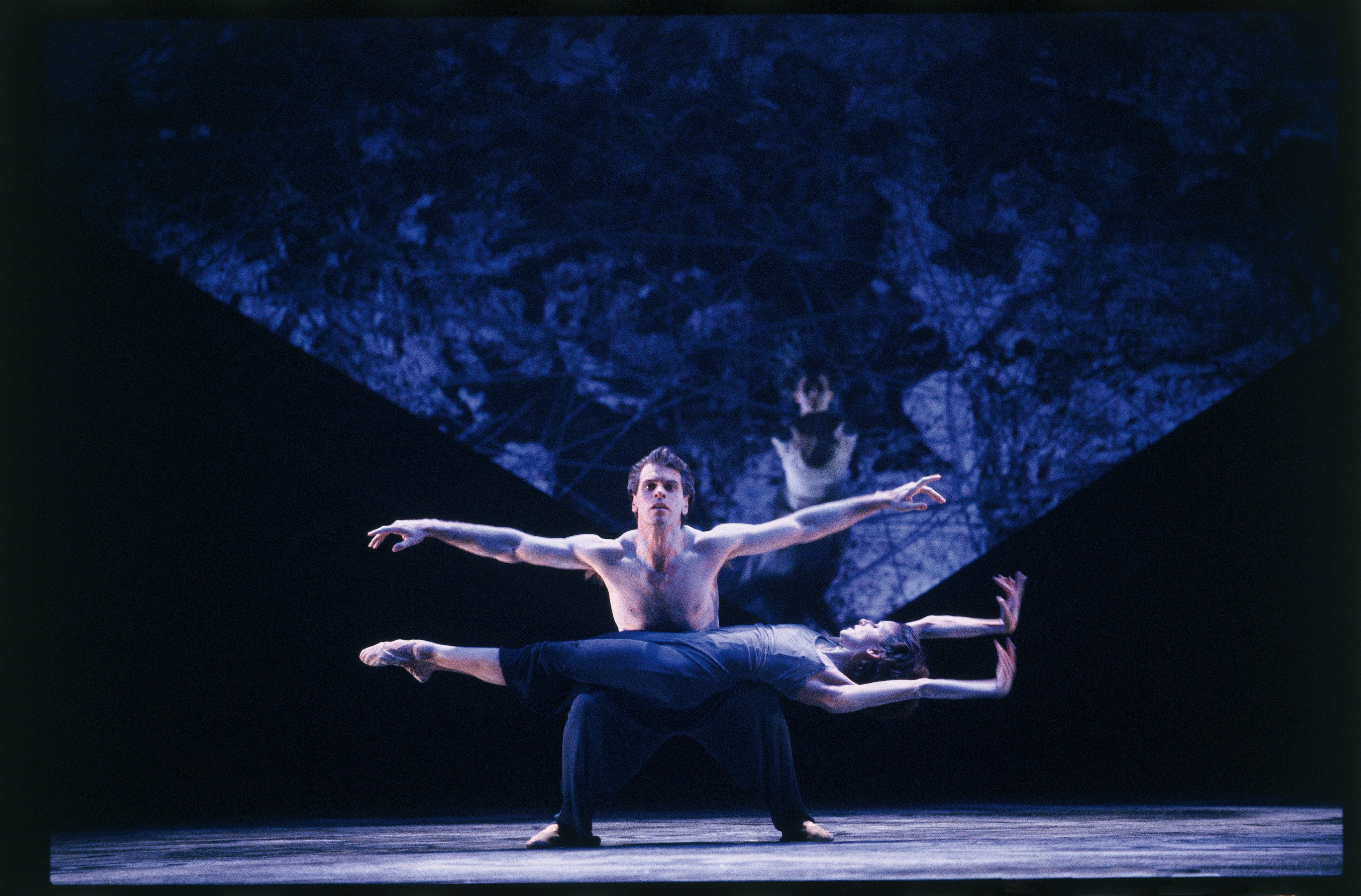
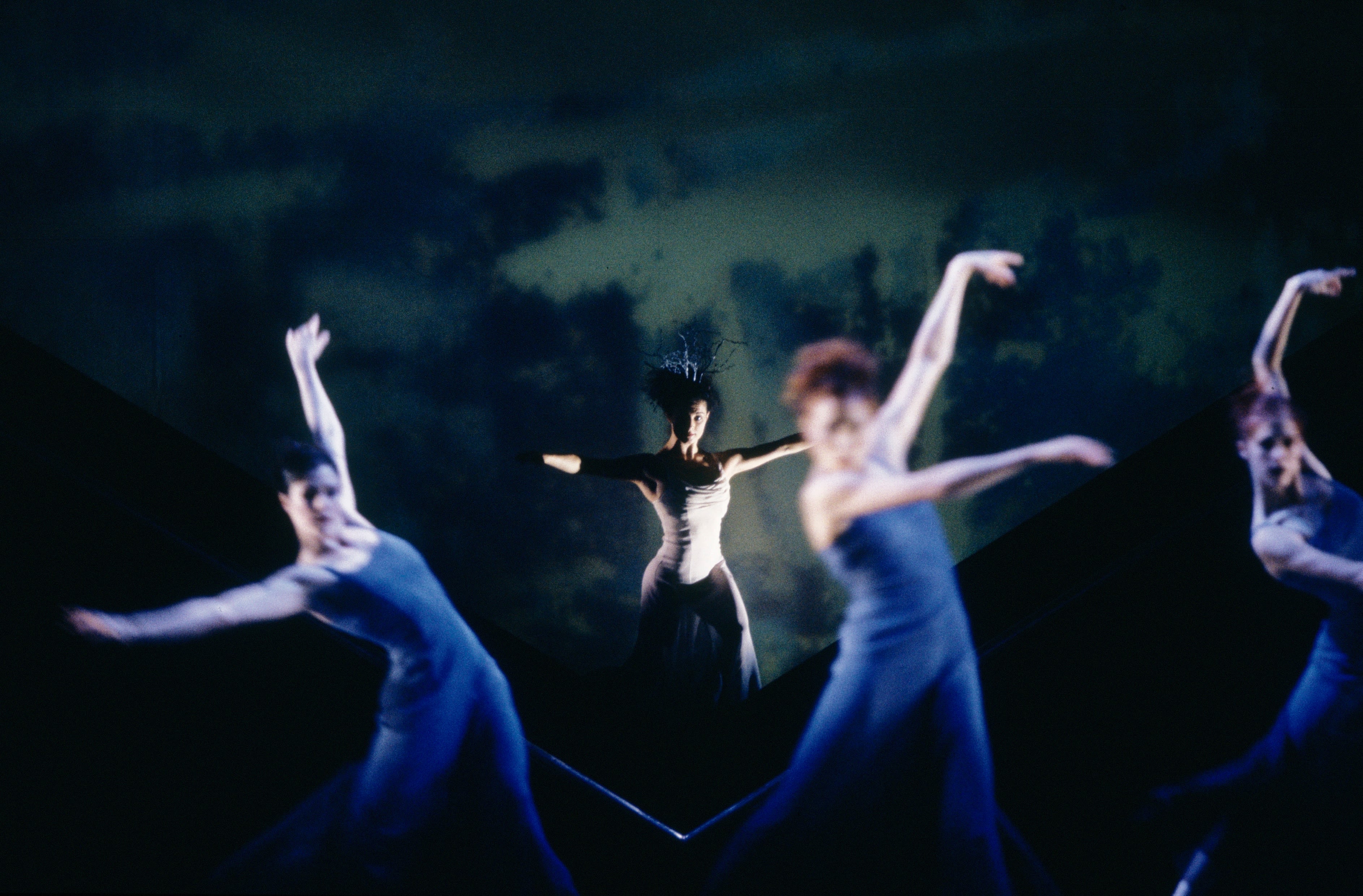
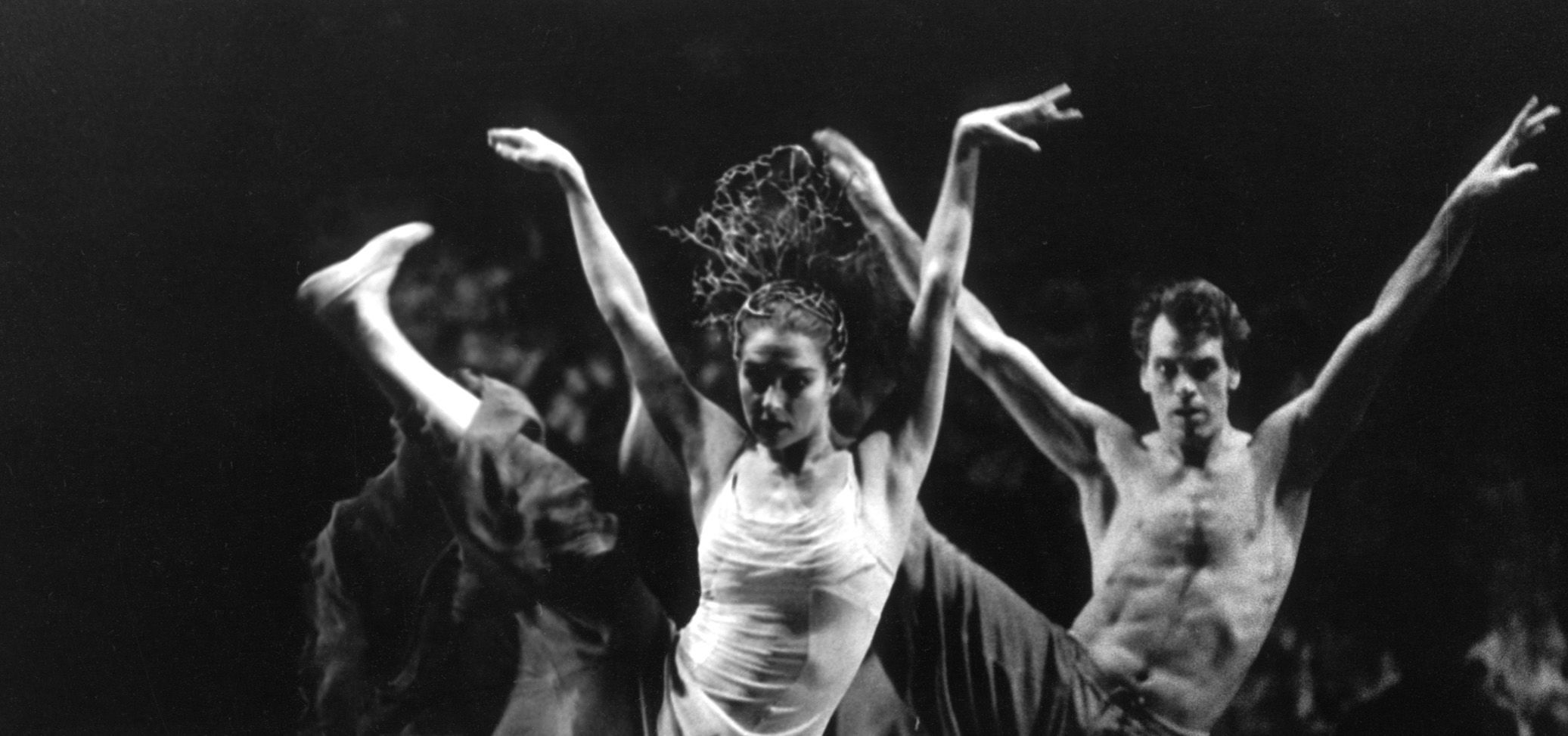

W I N D
Wind swept onto stage, shifting the colour palette from earthy tones to blues. Jennifer Irwin's diaphanous Wind costumes enhanced the movement's fluidity and temperament, which pivoted from delicate to tempestuous.
"Wind was beautiful with that set and the partnering. The dresses had a lot of skirt so that you got the feeling of movement and wind."
Jennifer Irwin, Costume Design, Rites, 2022
The Wind section was created on and performed by dancers from The Australian Ballet, with Miranda Barker driving the energy as the lead dancer.
There was a responsibility to dancing the wind. I tried to conjure up the spirit of the wind – to embody the wind. I did feel quite powerful ... the wind is powerful. It was an experience that was so new and different for me.
Miranda Barker, 2022
North, South, East, West
The wind signals change in environment.
For First Peoples, the wind (and the directions it comes from) indicates a shift in nature's energy and can flag the changing of the seasons.
Like these winds of change, Rites brought about a new season in Australian dance. It shifted the consciousness around the representation of First Nations cultures and peoples in the arts.
For too long, Aboriginal and Torres Strait Islander peoples have been, and often still are, spoken on behalf of and represented through the ambitions of assimilation practices and the notion of ‘the dying race’. Rites set a new precedent. It exemplified best practice – the sharing of First Nations cultures and stories first-hand, through First Nations leadership.
When I started to reflect on [the Wind] section … to me it characterises the responsibility that we have to be a conduit – to be advocating … supporting … and to continue to work for and hope for change – which the wind can bring.
Steven Heathcote, 2022
Rites, 1997. State Theatre, Arts Centre Melbourne. Footage courtesy The Australian Ballet and ABC Library Sales. STRAVINSKY: The Rite of Spring performed by Australian World Orchestra, Zubin Mehta Conducting. Courtesy ABC Classic. Licensed by Australian Broadcasting Corporation. The Rite of Spring by Igor Stravinsky is used by permission of Hal Leonard Australia Pty. Ltd, exclusive agents for Boosey & Hawkes Music Publishers Ltd.
Rites, 1997. State Theatre, Arts Centre Melbourne. Footage courtesy The Australian Ballet and ABC Library Sales. STRAVINSKY: The Rite of Spring performed by Australian World Orchestra, Zubin Mehta Conducting. Courtesy ABC Classic. Licensed by Australian Broadcasting Corporation. The Rite of Spring by Igor Stravinsky is used by permission of Hal Leonard Australia Pty. Ltd, exclusive agents for Boosey & Hawkes Music Publishers Ltd.

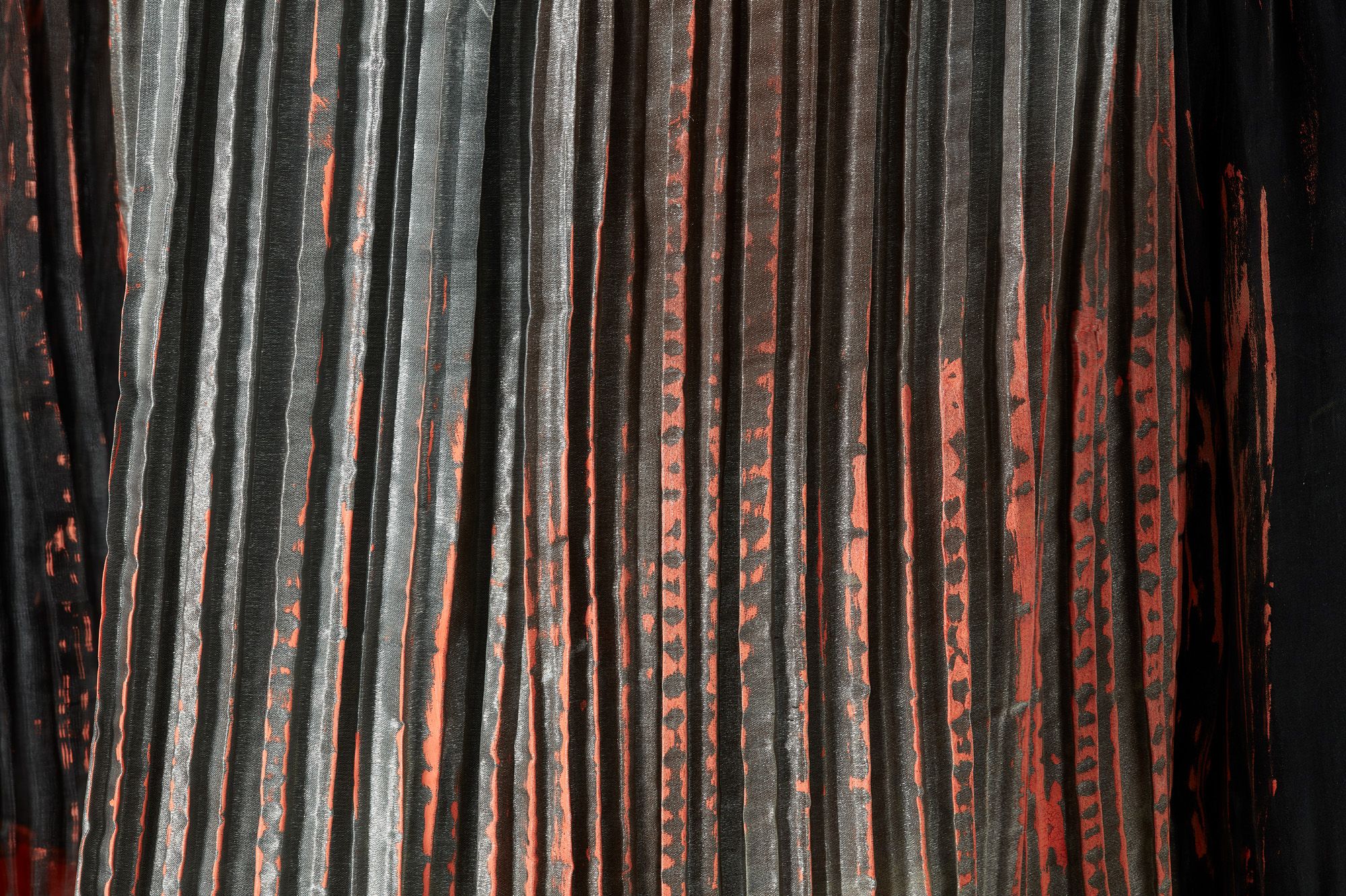
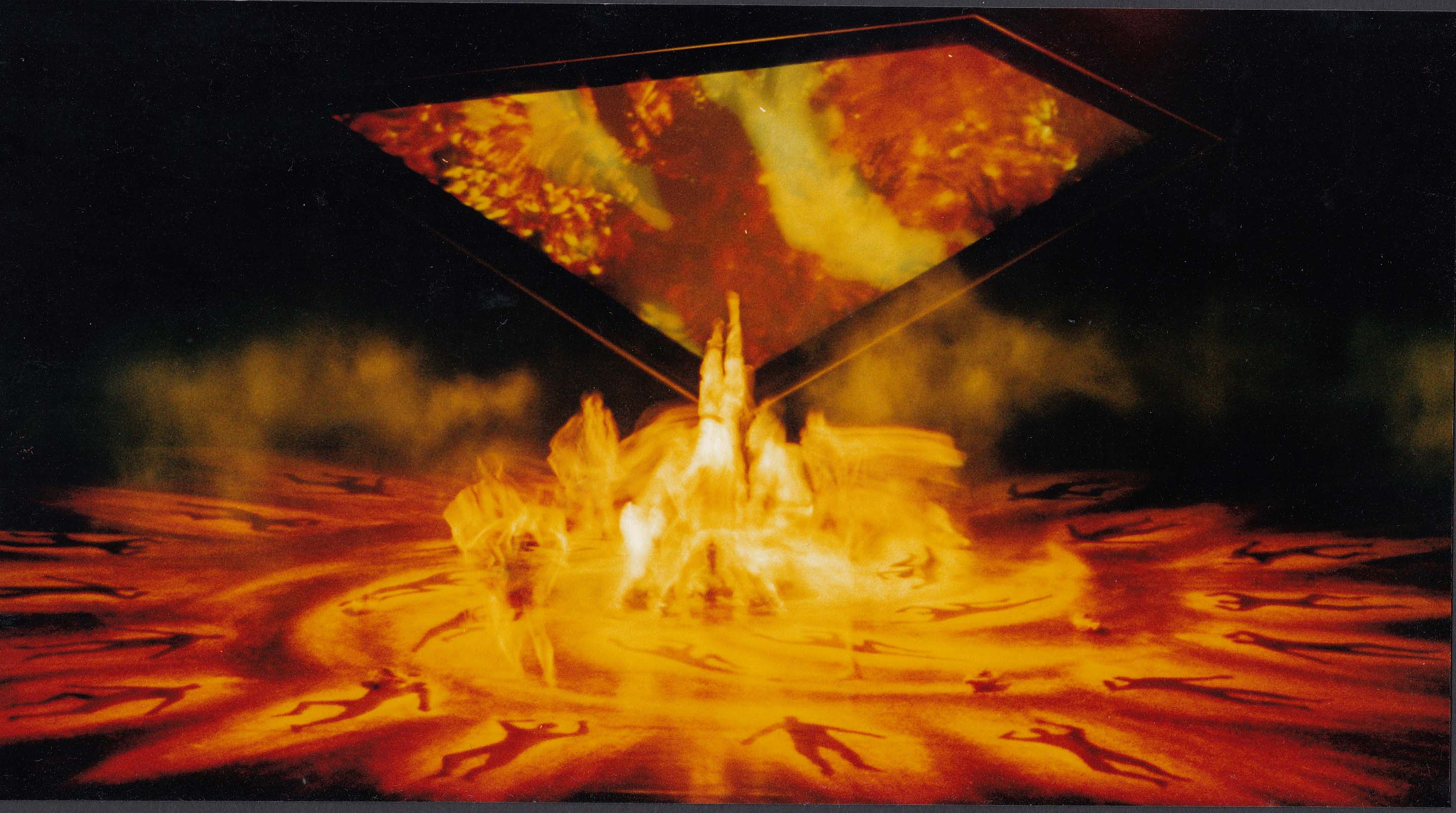
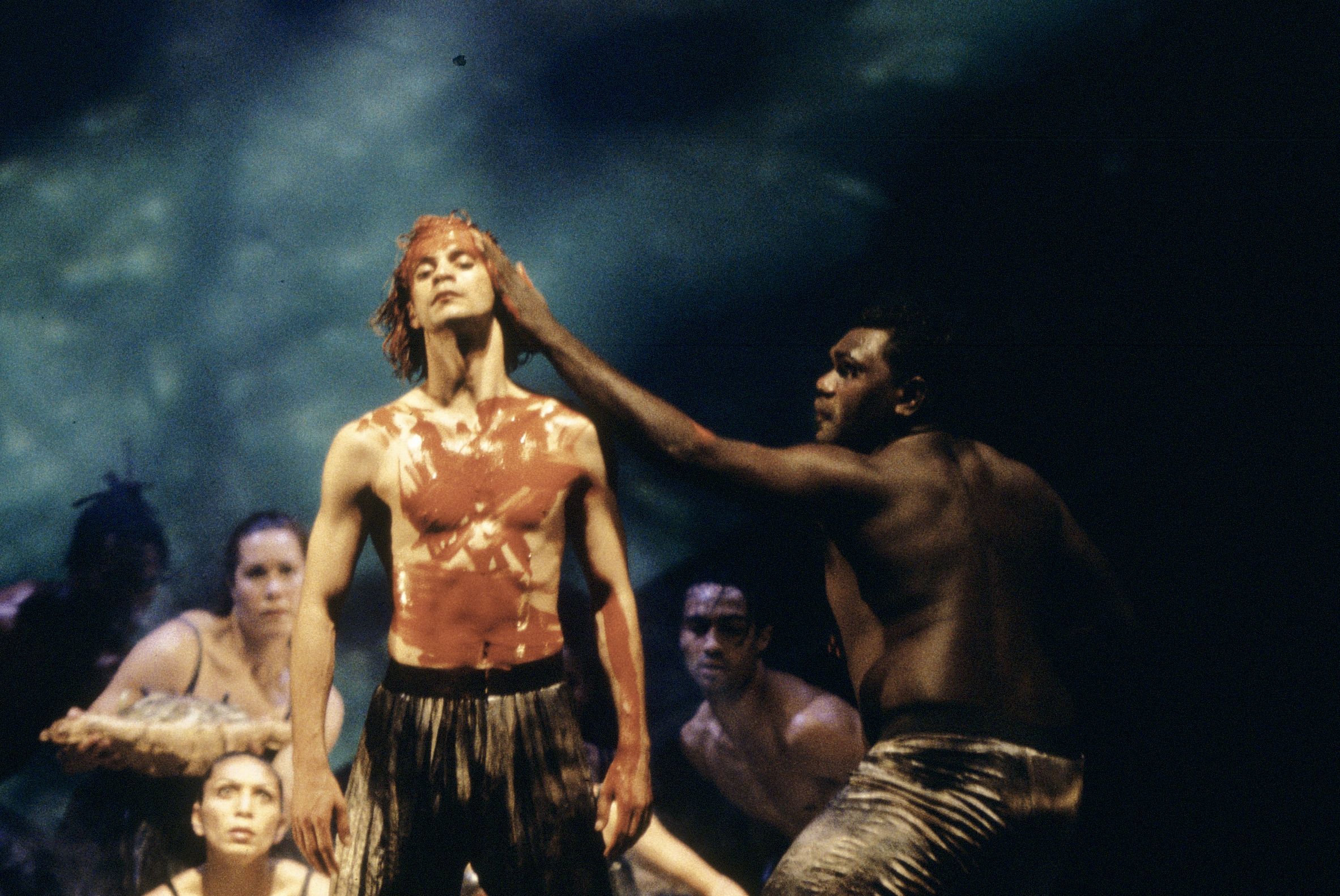

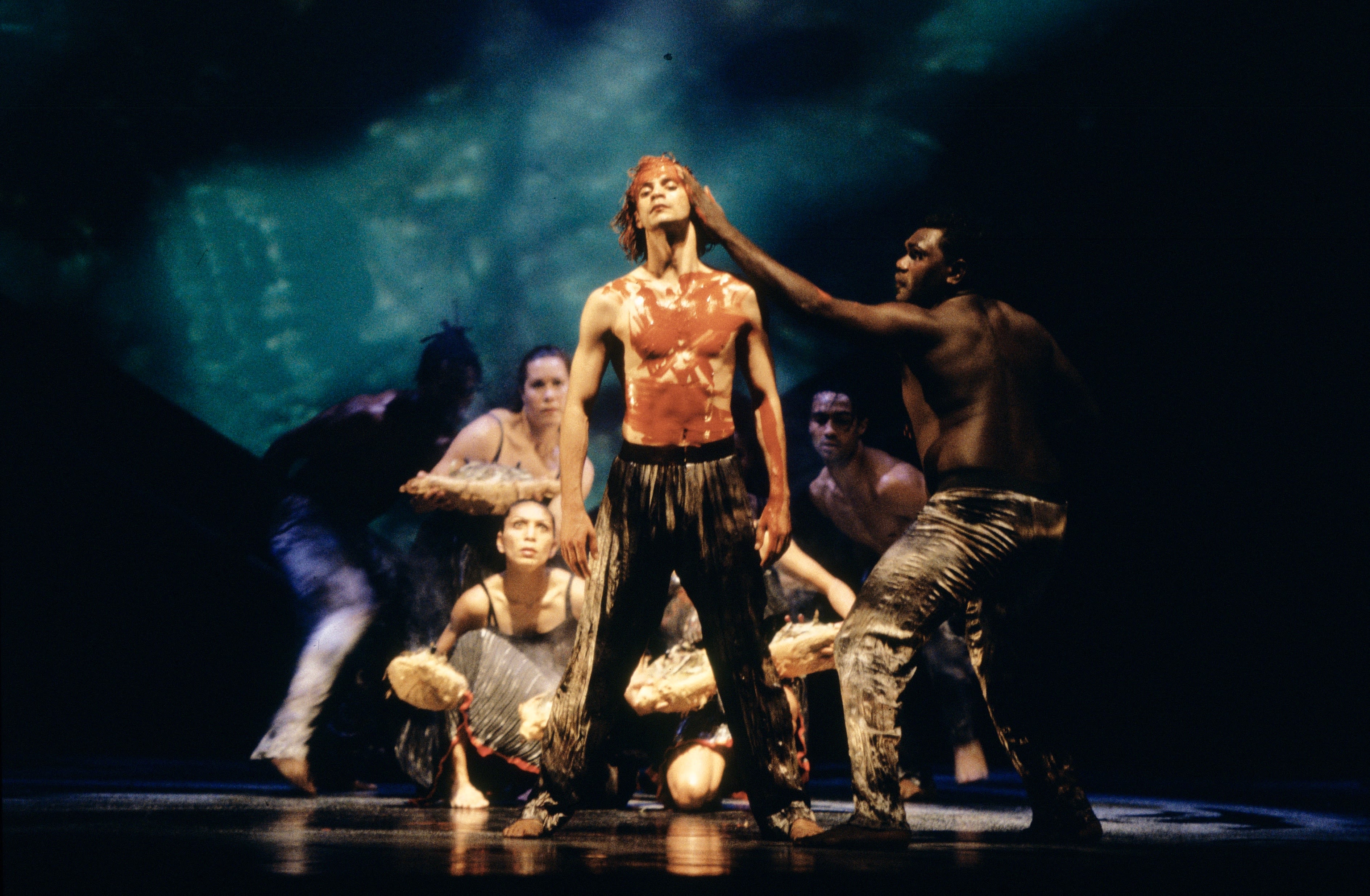
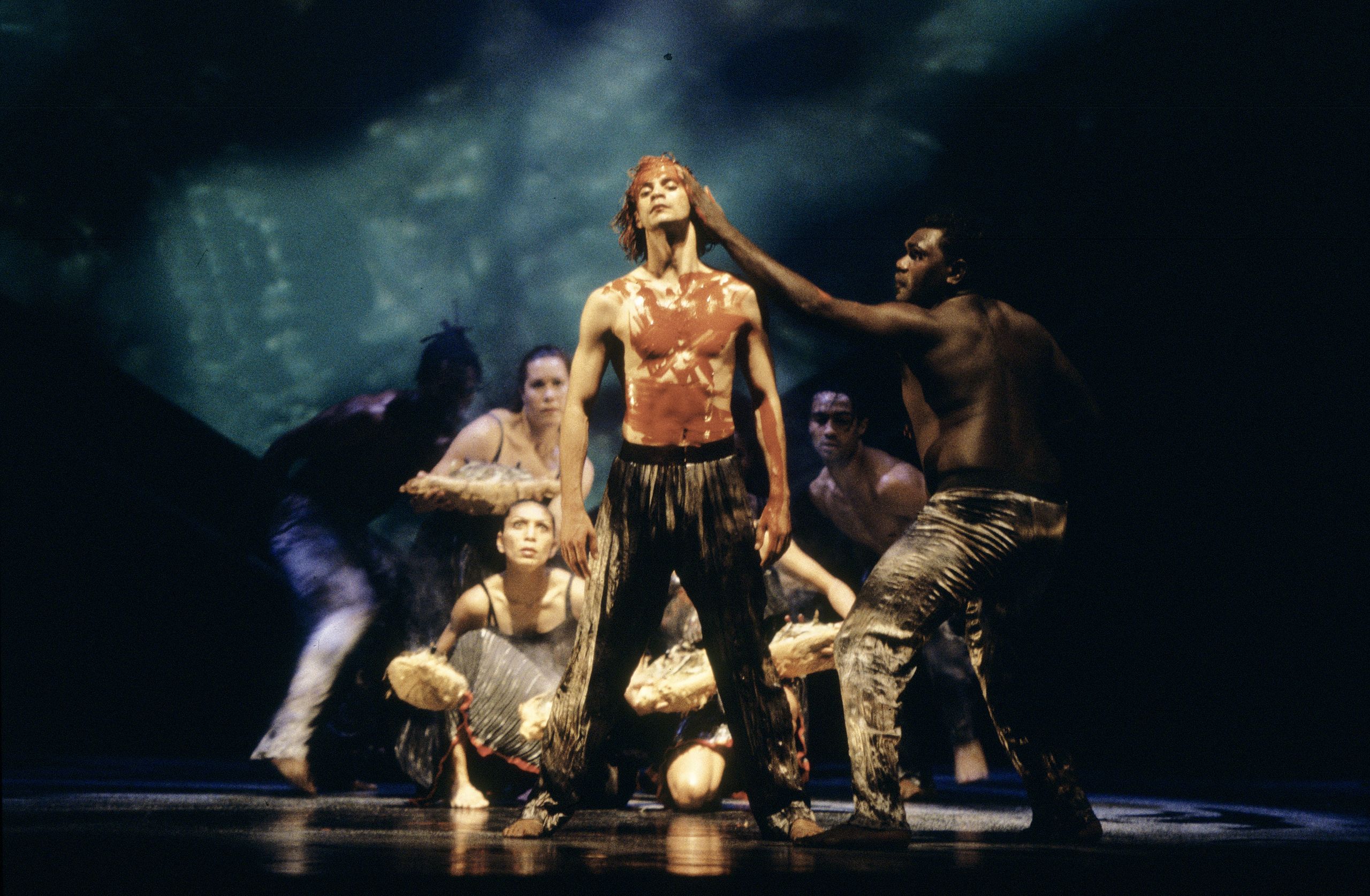
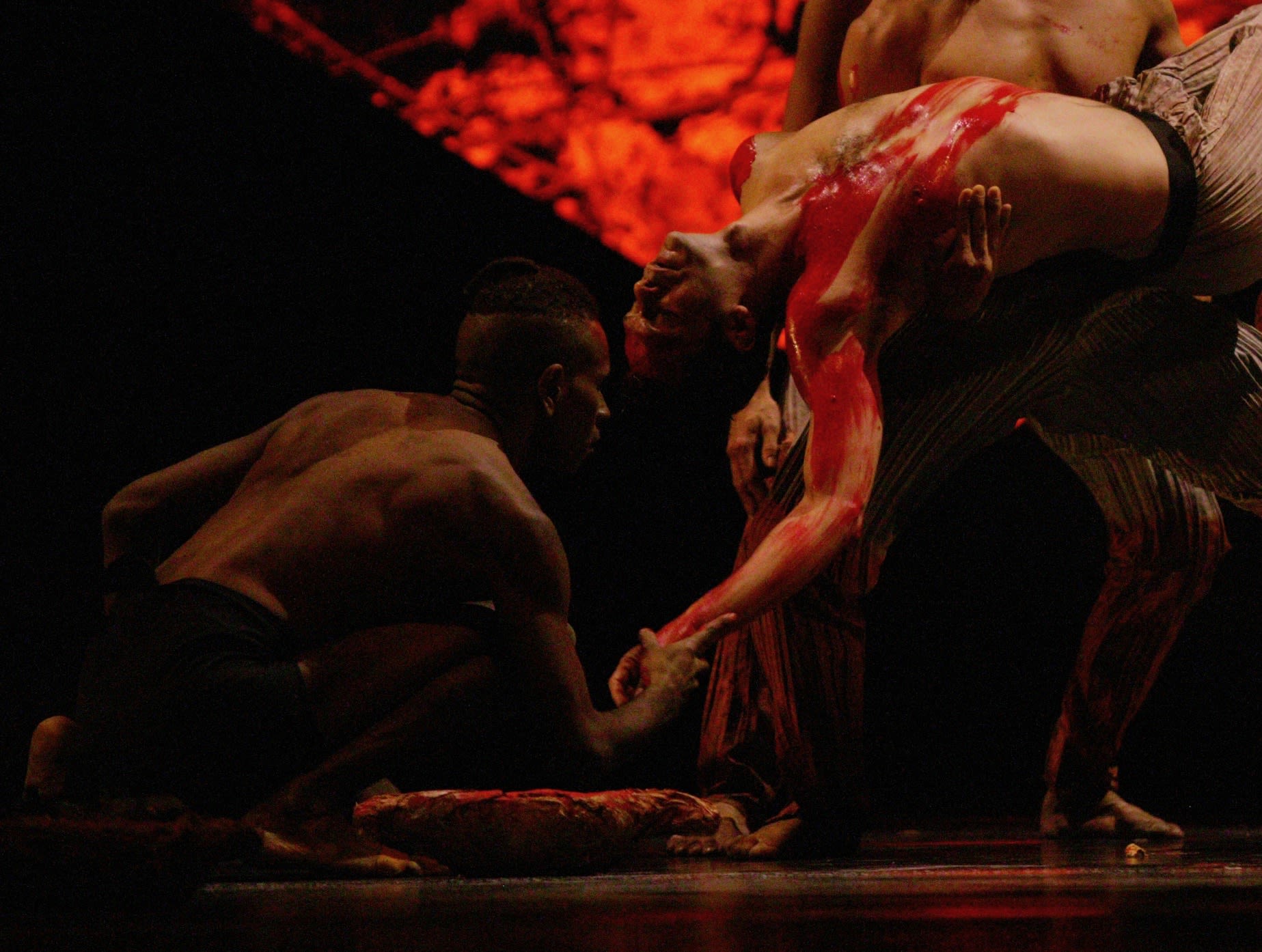
If it’s not happening in society and if it’s not happening in our communities, if our politicians aren’t making it happen, then our artist are. Our artists are creating this moment of change, and this shift ...
Frances Rings, 2022
F I R E
Ceremonial smoke drifts from the dancers' coolamons as blues warm to reds. The scene for ritual is set as men and women quietly settle into a circle.
Fire awakens new life – it’s cleansing for the Earth. It also nourishes us – we light the fire for cooking. And after a death, we make a fire for cleansing – a smoking ceremony so that the spirit can journey to where he belongs to.
Djakapurra Munyarryun, 2022
Igor Stravinsky called the second half of his work The Sacrifice. In the section that Stephen Page named Fire, the Bangarra Dance Theatre dancers explored the elements of ritual in First Nations cultural practices – fire, smoke, painting, dancing, healing and the quiet sharing of story and knowledge.
Stravinsky’s music taps into a sense of ritual, and a kind of ceremonial process that has a real journey from the beginning of the piece right through to the end.
Steven Heathcote, 2022
Inside The Australian Ballet studios, during rehearsals, the dancers would watch and admire members of the other company employing the mastery of their own form to advance the work.
Our cultural dances are really low. The Australian Ballet work with pointe shoes, working higher. We challenged ourselves to learn from each other. I was teaching them to connect to the earth.
Djakapurra Munyarryun, 2022
Culturally, the purpose of ritual is vast and varied, but ritualistic practices always transmit knowledge and maintain connection to people and place through a complex kinship system.
The ability to practice Aboriginal and Torres Strait Islander cultures has been thwarted by colonisation, and the effects of this extend far beyond First Peoples' communities. At the time of colonisation, every part of this country was cared for by Traditional Custodians who worked in accordance with Lore to maintain the health of Land and People.
Utilising knowledge grown over thousands of years, tools such as fire-stick farming have been an important practice on this continent for millennia. However, Western understandings of fire are not transferable to this country. Laws have been established, based on the colonial fear of fire. This has seen much cultural burning banned, enabling dangerous fuel loads to mount, causing loss of habitat and wildlife, and uncontrollable wild fires to become a regular summer danger.
As society grows to respect and engage with the deep knowledges of our First Peoples, Country may be healed with the reinvigoration of such cultural practices. First Nations people seek the recognition of sovereignty, and the ability to exercise their customs and cultural practices. If we want to have true reconciliation, there will need to be sacrifices – a change of perspective, a change of views and a change to the way we live on this country.
... initially I missed the element of sacrifice which remains key to most stagings [of The Rite of Spring]. Afterwards, though, I realised what every Australian would know from the beginning: that the sacrifice has taken place in real life and real time - in the genocide of native Australians by European settlers, and the heartbreak of the 'stolen generation' ...
Luke Jennings, The Guardian, 2008
And through art, First Nations voices have forged a platform to affirm:
We are here – Always Was, Always Will Be.
It is a beautiful thing to share the space, equally, through cultural recognition and expression.
Rites, 1997. State Theatre, Arts Centre Melbourne. Footage courtesy The Australian Ballet and ABC Library Sales. STRAVINSKY: The Rite of Spring performed by Australian World Orchestra, Zubin Mehta Conducting. Courtesy ABC Classic. Licensed by Australian Broadcasting Corporation. The Rite of Spring by Igor Stravinsky is used by permission of Hal Leonard Australia Pty. Ltd, exclusive agents for Boosey & Hawkes Music Publishers Ltd.
Rites, 1997. State Theatre, Arts Centre Melbourne. Footage courtesy The Australian Ballet and ABC Library Sales. STRAVINSKY: The Rite of Spring performed by Australian World Orchestra, Zubin Mehta Conducting. Courtesy ABC Classic. Licensed by Australian Broadcasting Corporation. The Rite of Spring by Igor Stravinsky is used by permission of Hal Leonard Australia Pty. Ltd, exclusive agents for Boosey & Hawkes Music Publishers Ltd.

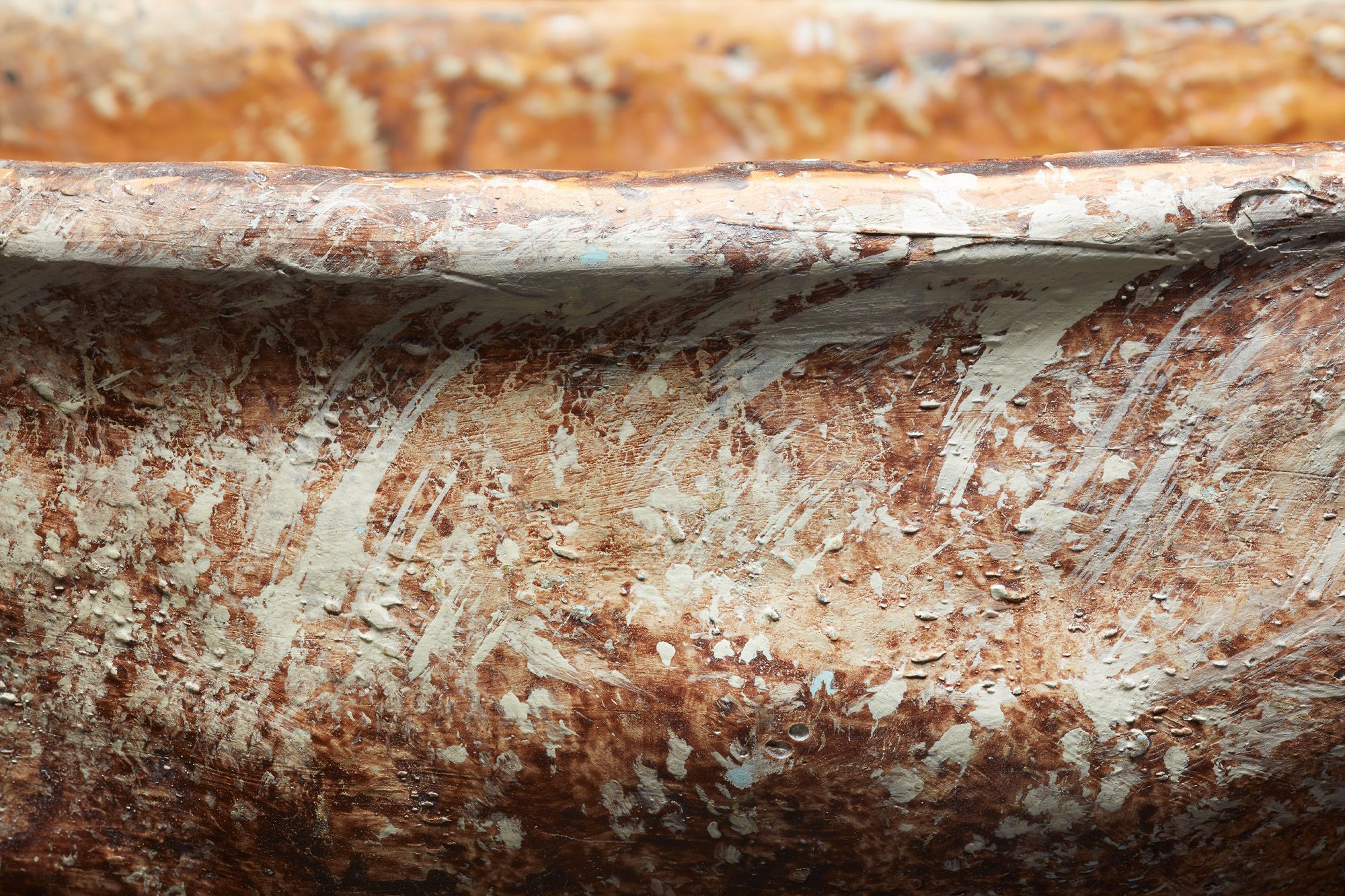
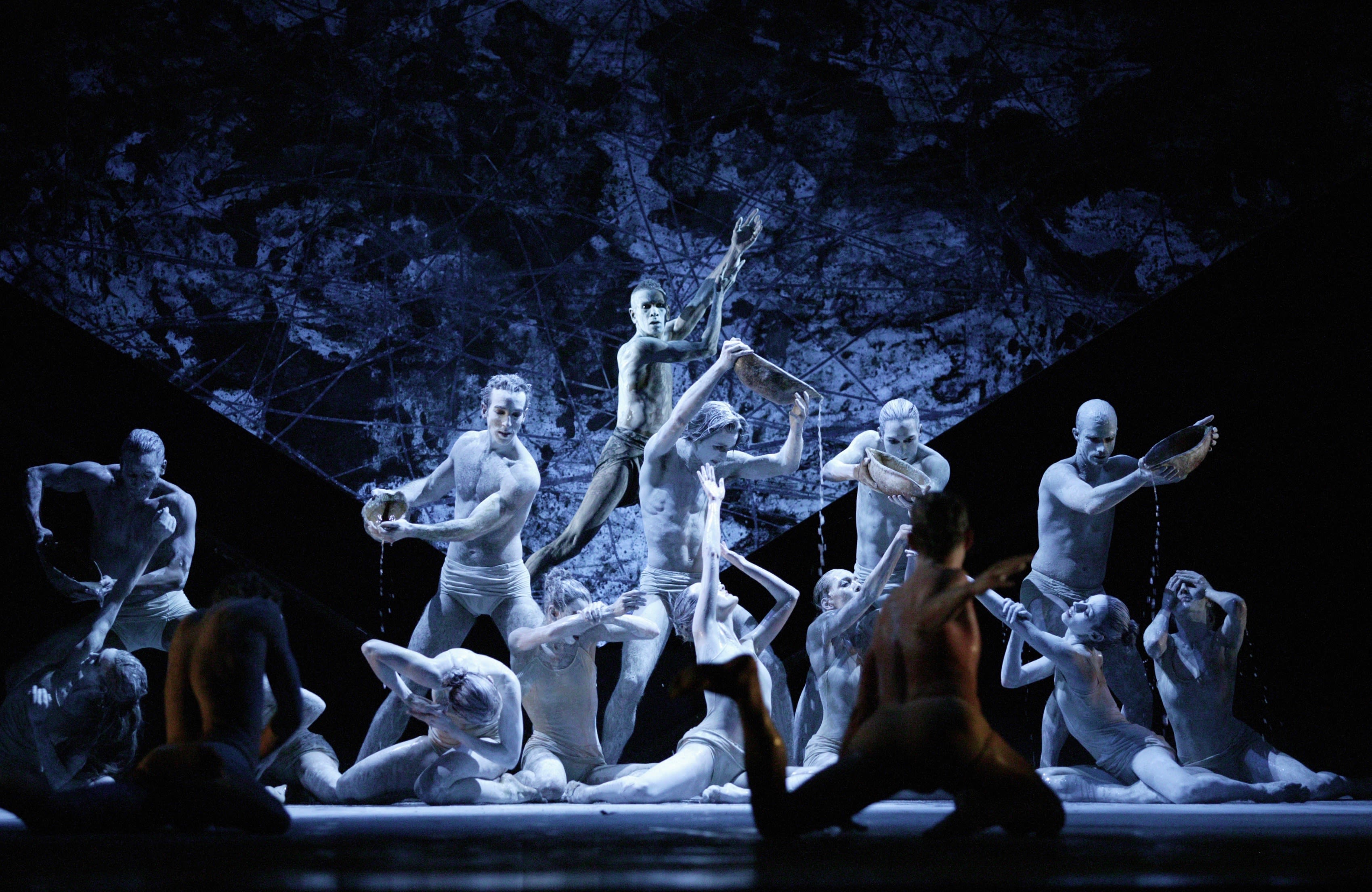

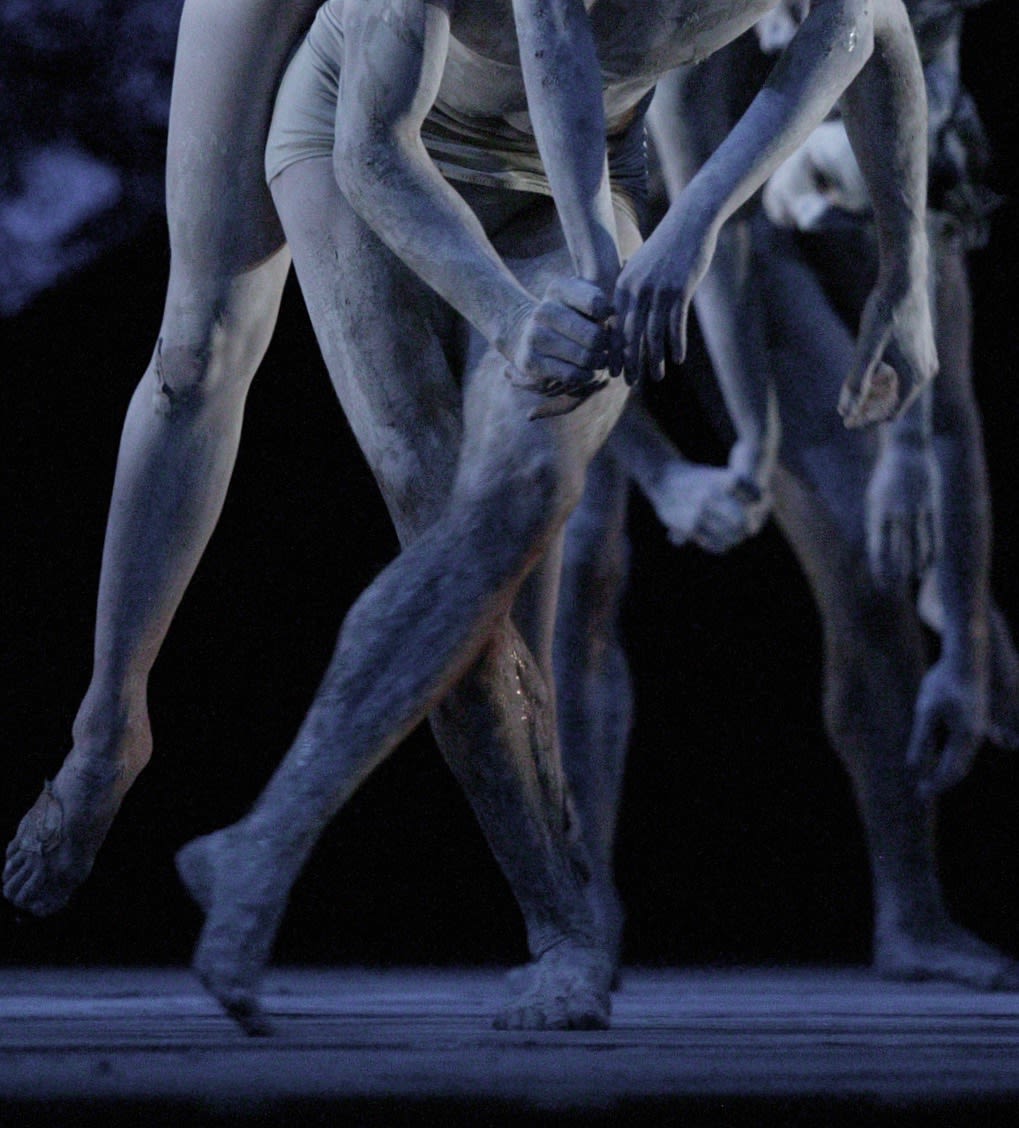
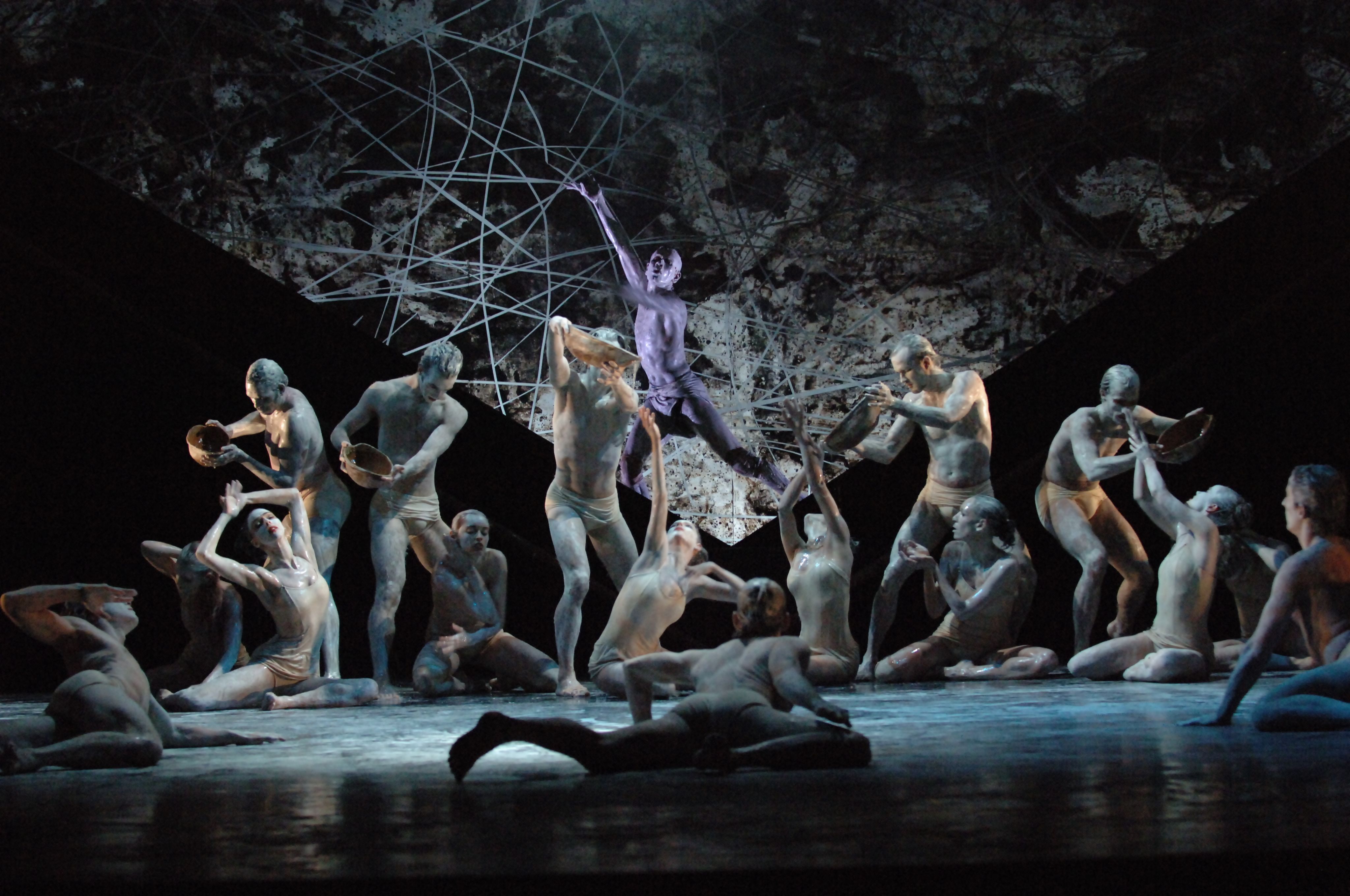
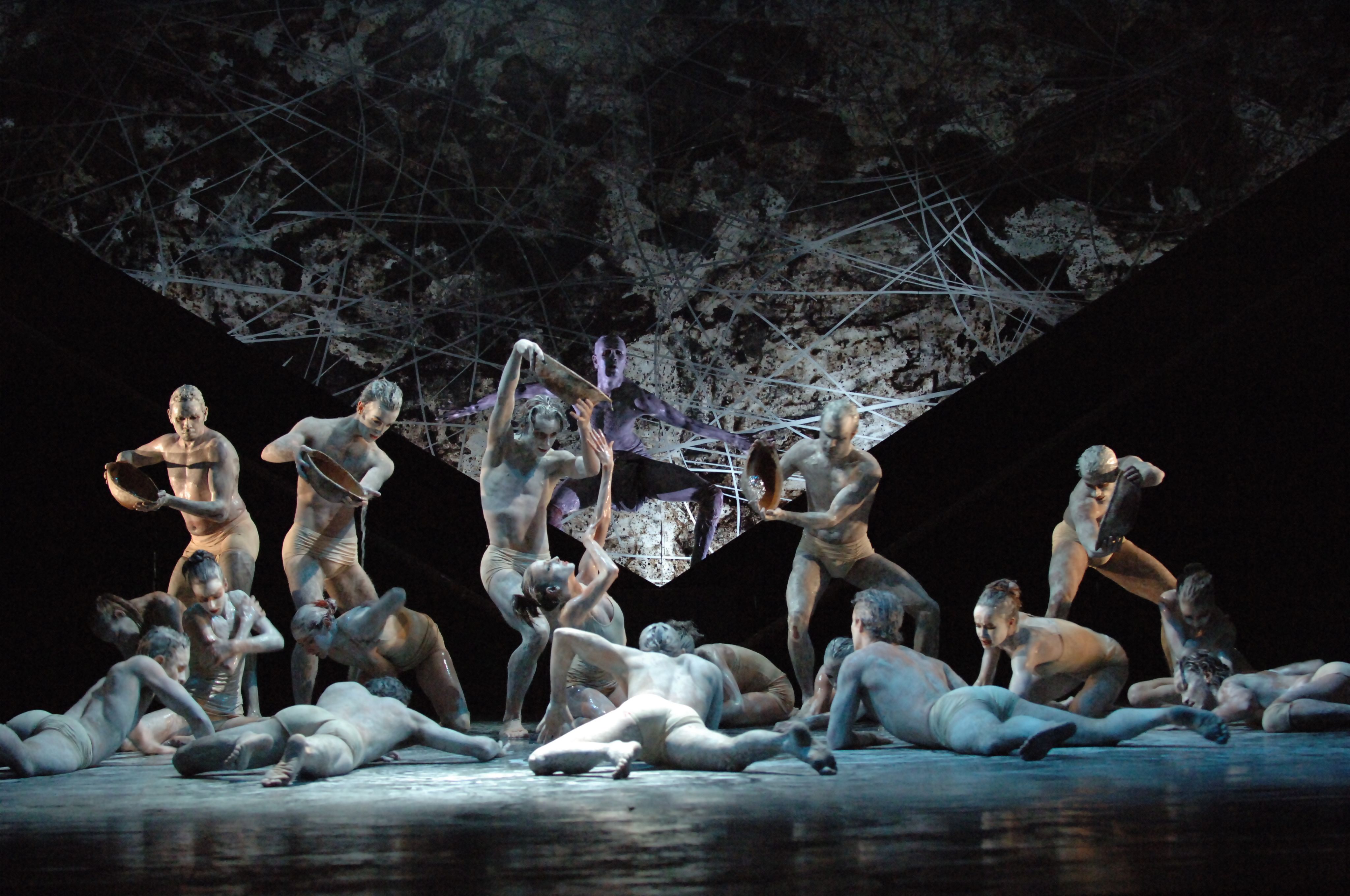
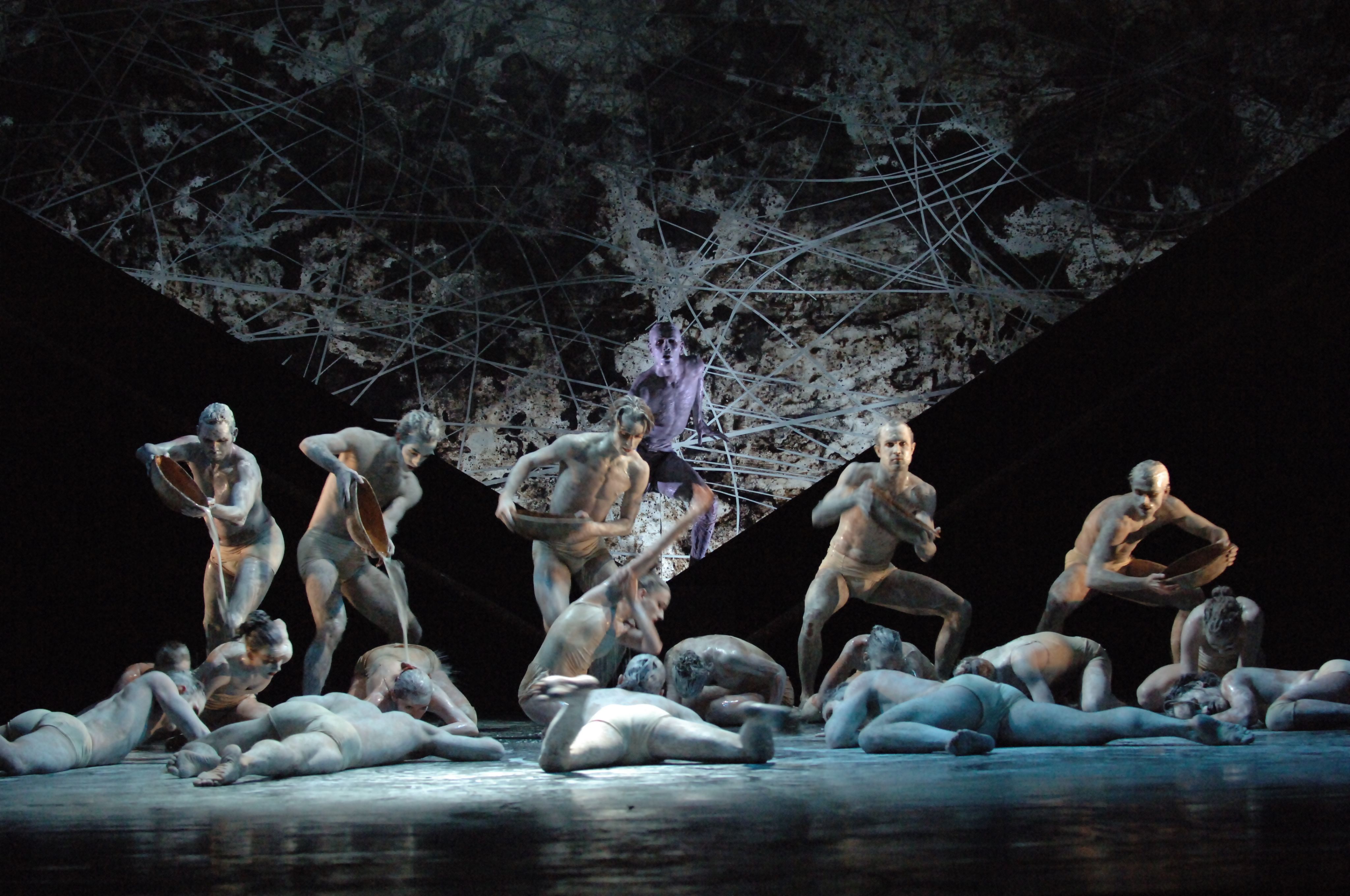
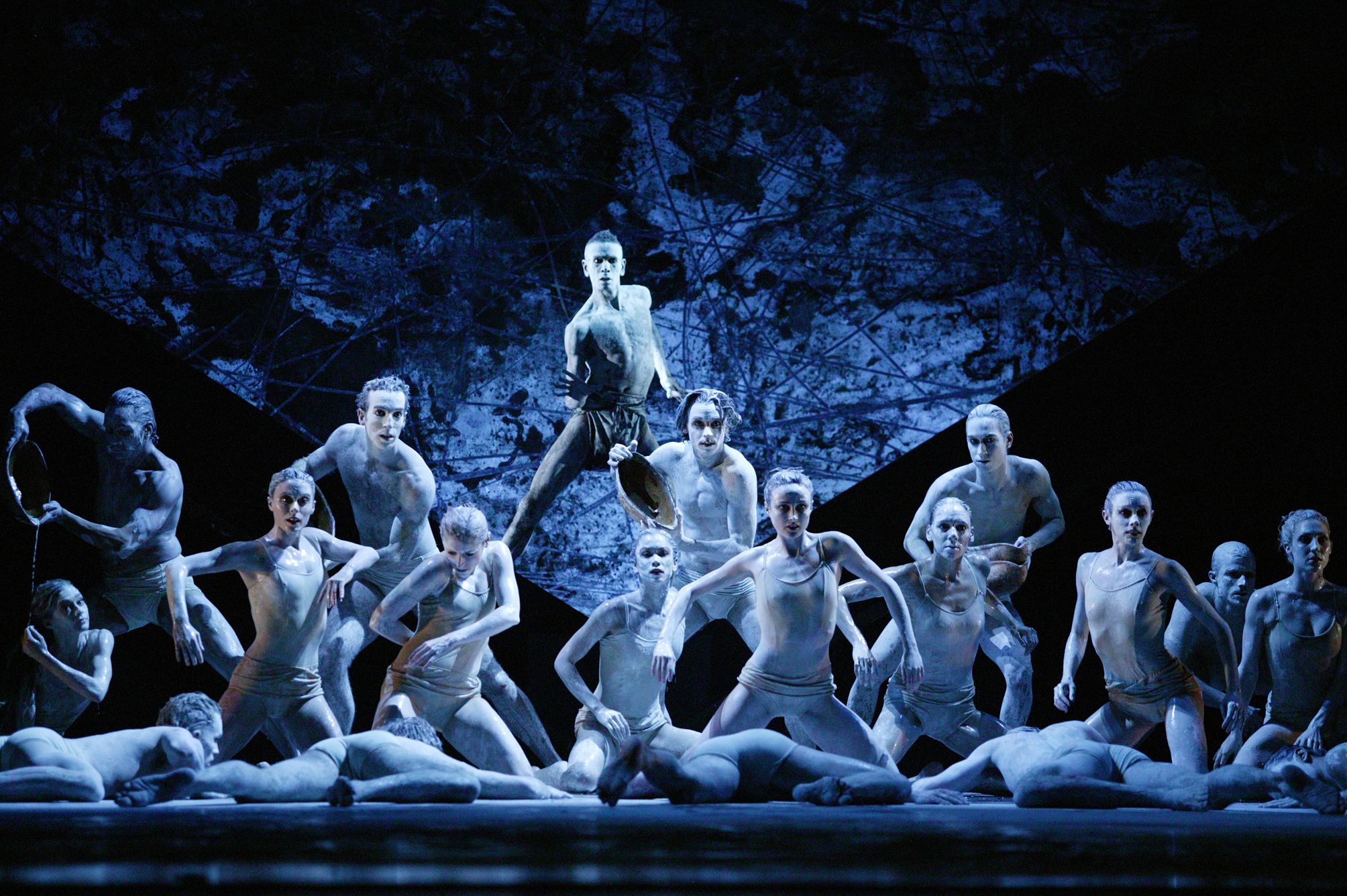
The moment when water is finally poured on the parched, ochre-smeared dancers is masterly, for Page allows the music to make the point, drums pounding, while the dancers simply receive the life-giving liquid. To Australians the symbolism is potent.
Hilary Crampton, The Age, 1999
W A T E R
For people across the globe, water is cleansing, washing away what does not serve us. For Yolngu people, it also represents knowledge. Water has been here since the beginning of creation. It has nestled inside the belly of the Earth, it has dabbled the sky, carved through waterways, and supported all living beings. Aquatic bodies are intimately woven into lore, the Songlines, the kinship systems. Spiritually, water holds memory, carrying knowledge from all it has touched. It is sacred. Water is life.
Bodies coating each other as ochre coats the skin, through sinuous duets and trios, 27 dance artists aligned through the kinetic energy of Water.
I loved the [Water] section – we had more interaction with the ballet dancers. I felt this real sense of coming together to respect, honour and celebrate [with] the sense of rewriting the narrative of our Country. It’s a collective responsibility to care for Country and to honour the original custodians and the people who are born from that.
Frances Rings, 2022
As the dancers of The Australian Ballet came to experience how this 'new' Country has ancient roots – to be respected – they also learned how to access the roots of their movement from a new place, adding to their technical and story-telling palette. The Bangarra Dance Theatre artists observed the ballet dancers' mastery in performing the Western, classical style, their precision and focus. As these two distinct companies united, there was a beautiful exchange of knowledge ... a recalibration and re-patterning of minds, and even of organisational operations.
The Australian Ballet has one of the best ‘safe-dance’ programs in the world. This supports dancers to maintain peak physical condition as well as longevity in their careers. The Bangarra dancers had access to this new world of support from The Australian Ballet's expert physiotherapists, massage therapists and sports physicians. They were introduced to training programs that focussed on strengthening the individual. This was transformative for Bangarra. They witnessed and embraced how small, fine-tuning measures can bring about incredible, long-lasting results. Bangarra’s safe-dance practice was forged following this collaboration.
The transmission and sharing of knowledge have also guided subsequent Rites seasons, with next generation dancers bringing their best to the production. Stephen Page worked with the strengths of each dancer, adjusting finer elements within the choreography to air their unique qualities and also enhance the work. In the 2006 and 2008 Rites seasons, Patrick Thaiday, took on the role previously performed by Djakapurra Munyarryun.
Page always leaves room for individuality among the dancers and there is a succession of notable contributions in addition to the mesmerising performance by Bangarra's Patrick Thaiday.
Jill Sykes, The Sydney Morning Herald, 2006
Through the poetry of movement, the pouring of water became ceremony, reinforcing the reciprocation experienced through exchange of knowledge from a place of openness and respect.
We went through a rite of passage in quite a few ways.
Miranda Barker, 2022
Rites, 1997. State Theatre, Arts Centre Melbourne. Footage courtesy The Australian Ballet and ABC Library Sales. STRAVINSKY: The Rite of Spring performed by Australian World Orchestra, Zubin Mehta Conducting. Courtesy ABC Classic. Licensed by Australian Broadcasting Corporation. The Rite of Spring by Igor Stravinsky is used by permission of Hal Leonard Australia Pty. Ltd, exclusive agents for Boosey & Hawkes Music Publishers Ltd.
Rites, 1997. State Theatre, Arts Centre Melbourne. Footage courtesy The Australian Ballet and ABC Library Sales. STRAVINSKY: The Rite of Spring performed by Australian World Orchestra, Zubin Mehta Conducting. Courtesy ABC Classic. Licensed by Australian Broadcasting Corporation. The Rite of Spring by Igor Stravinsky is used by permission of Hal Leonard Australia Pty. Ltd, exclusive agents for Boosey & Hawkes Music Publishers Ltd.

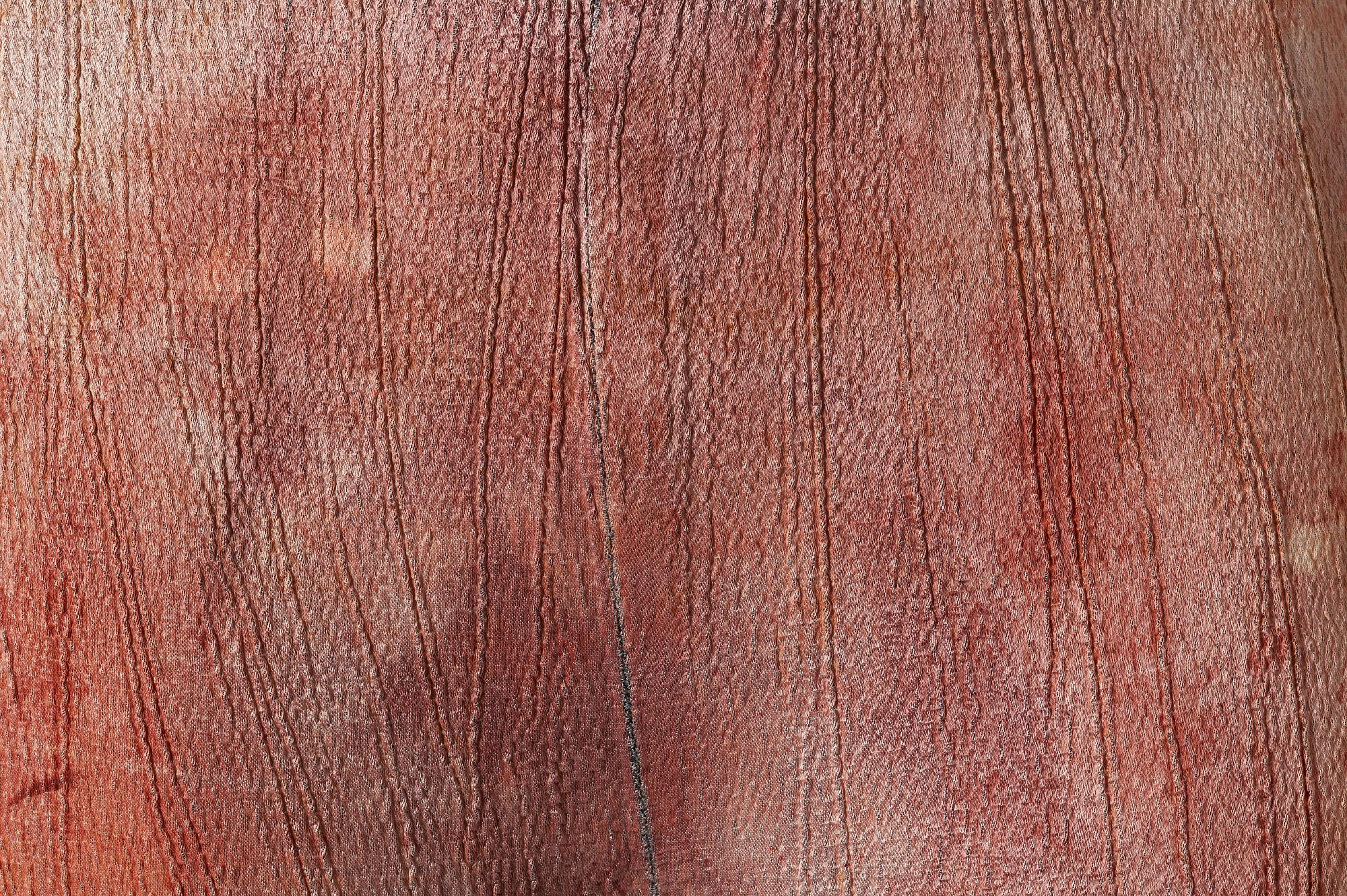
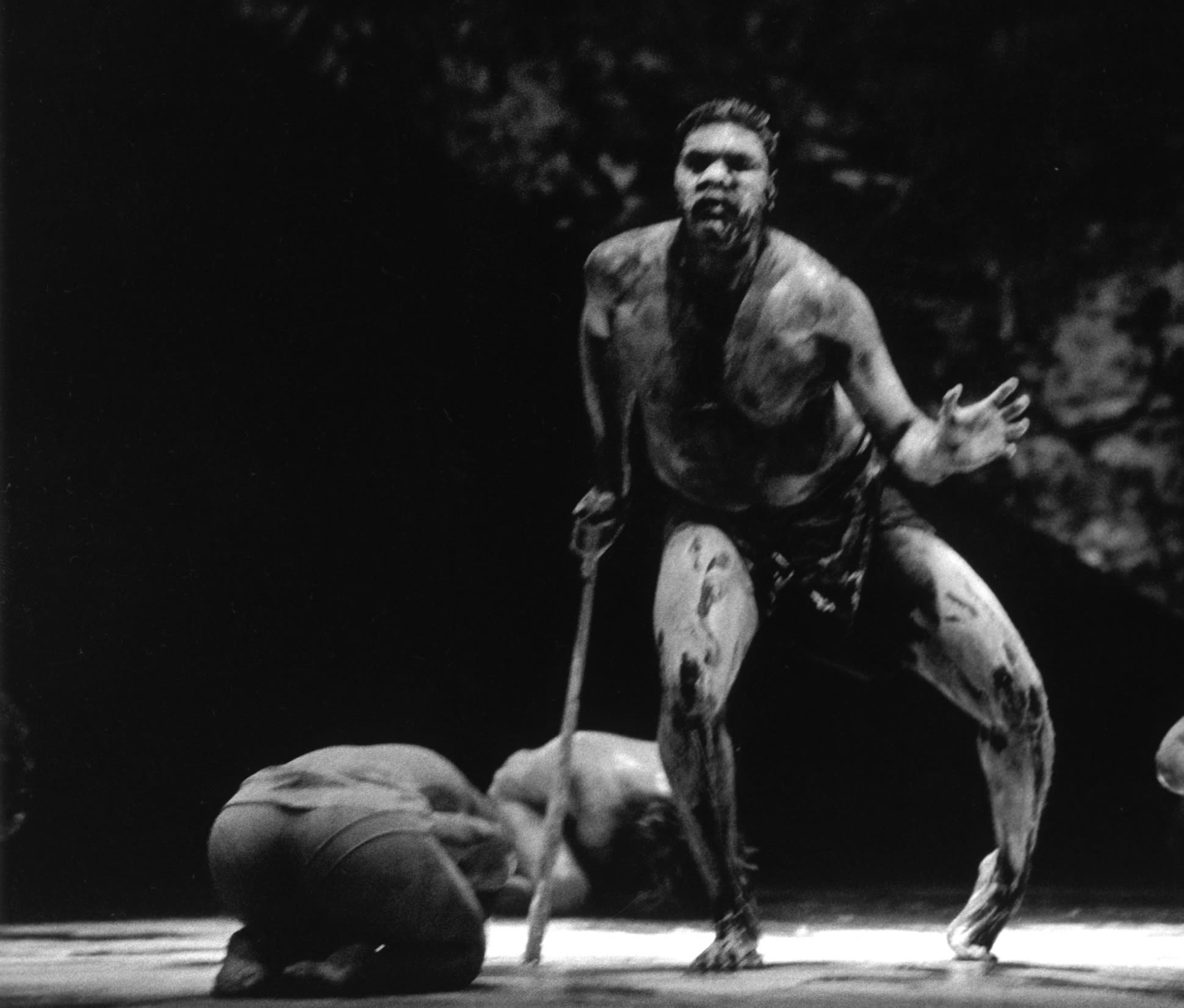
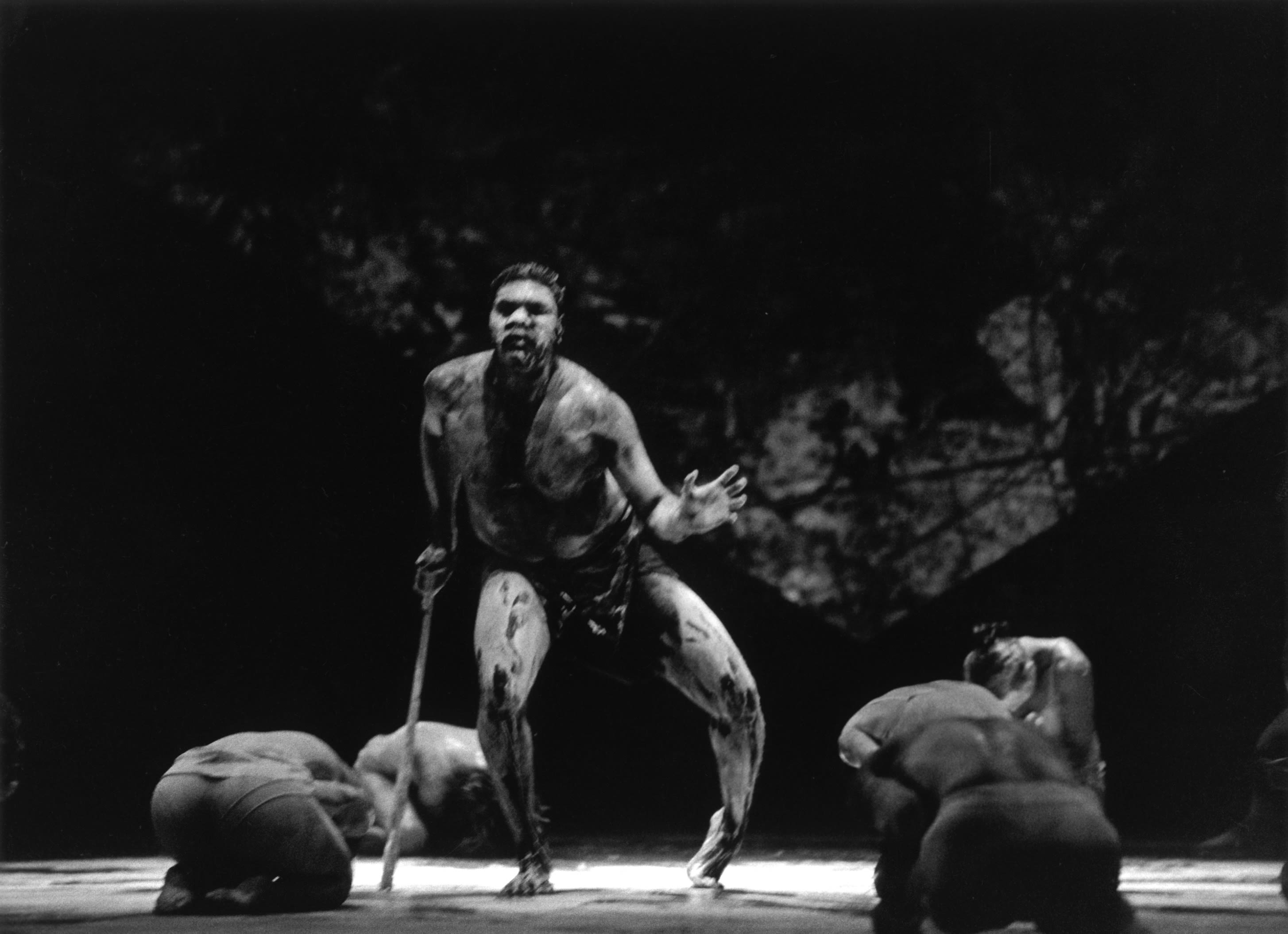
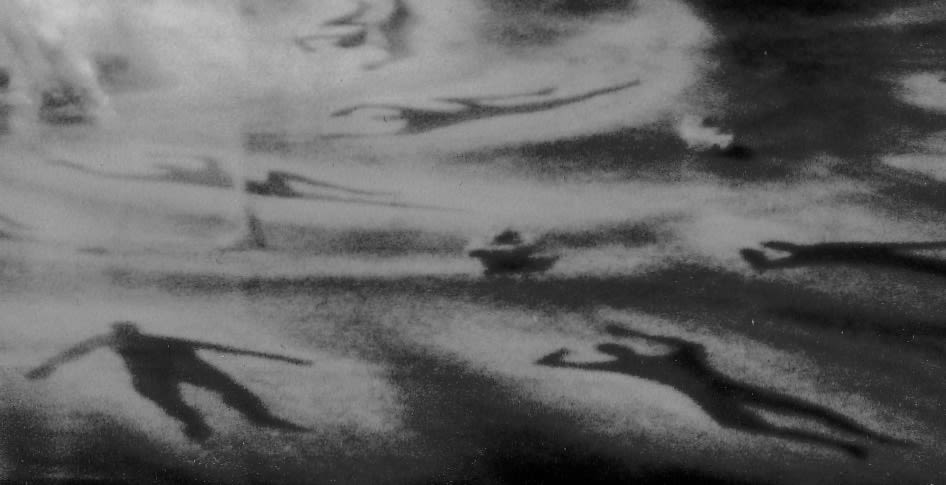
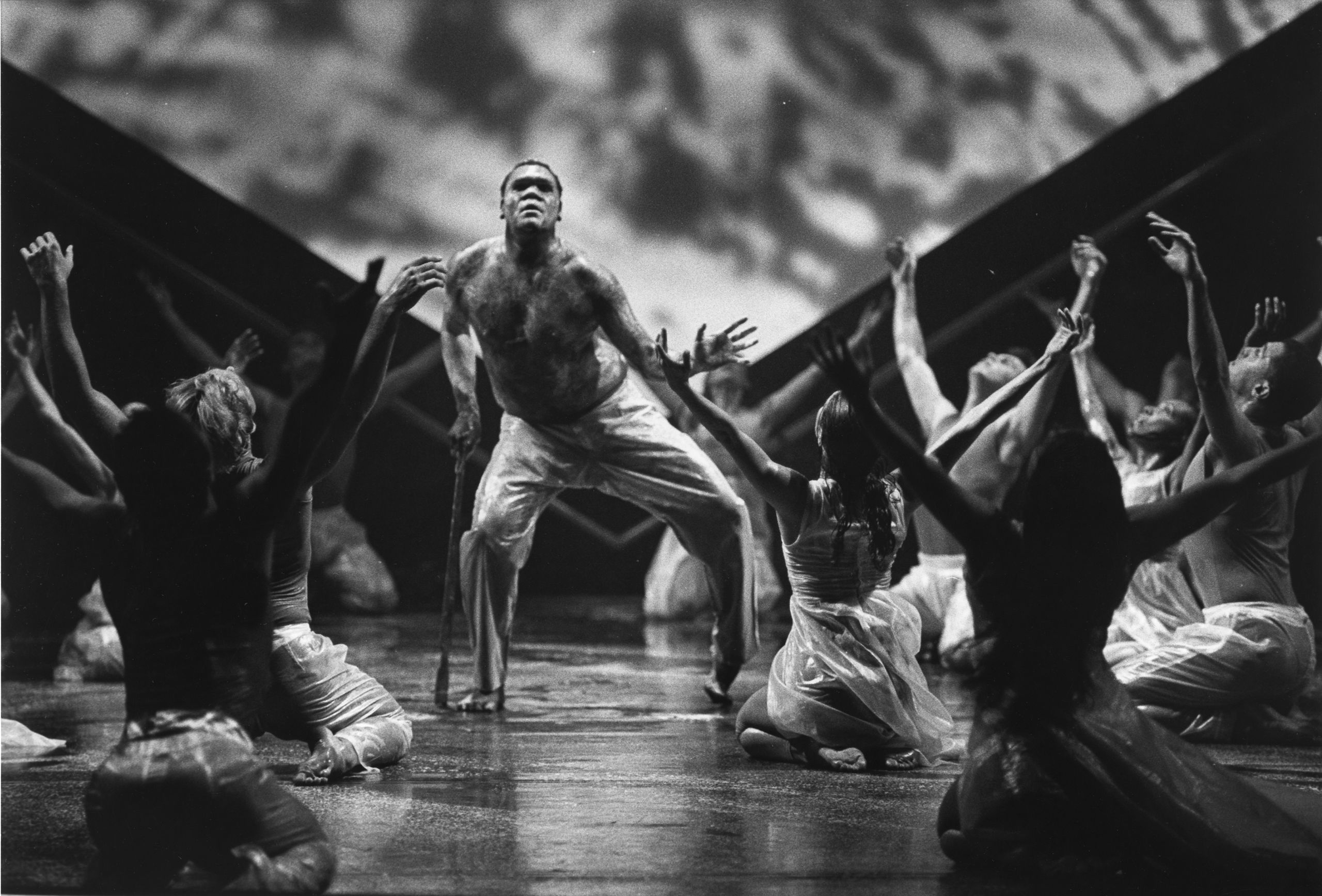

… true to his cyclical beliefs, Page returns everything to the earth and another dreaming.
Lee Christofis, The Australian, 1997
D R E A M I N G
Mesmerising – a compelling interplay between music, the human spirit and connection to Country. The final section of Rites anchored the energies of the full ensemble. Through the soaked and ochred, slippery stage, canons of grounded movement circled out from Djakapurra who charged the space with his spirit.
I often wonder, if Igor Stravinsky was able to be with us at the time that Rites was created by Stephen, I actually think he would have been proud. I think Stephen tapped into the power and the subtleties of the music and brought a meeting of the spirituality of the music and of the movement together beautifully.
Steven Heathcote, 2022
Grounded in the earth, The Dreaming informs the 'being' of Aboriginal Peoples. It works in a non-linear, temporal matrix, where past, present and future coincide. The Dreaming is a conceptual home to the Creative wisdoms that form the libraries of oral history – of adaptive co-existence.
All things, across all times, have a place within this knowledge space, from cultural songs and dances (from both before and after 1788) to alcohol and mobile phones. Like so many First Nations concepts, the Dreaming cannot be completely held within the vessel of the English language. Its Aboriginal understanding is layered by the interplay of knowledges that often have no relatable models or names within contemporary Western culture. But, Western terminology is required to help everyone gain some insight into this incredibly unique and complex world of being, relating, sustaining and thriving.
Dreaming stories are visionary and intuitive, as is the choreographic process for Stephen Page and Bangarra Dance Theatre. Like many artists, through creative flow, Stephen often feels he becomes a vessel facilitating the transmission of story. Inside the creative cave, he opens his senses to the energy of the room and the artists’ responses to story.
I feel so lucky to have had this experience. Being part of the clay, part of the birthing of a new creation is, for a dancer, the ultimate highlight. It’s hard to beat that experience.
Miranda Barker, 2022
Dreaming stories often follow a genesis narrative, imparting information that documents the many changes this continent has experienced across thousands of years, while also expounding moral and environmental lore and systems of reciprocity. Through Country, these stories are activated.
Since colonisation, First Nations' communities have experienced a disjoint in the invigoration of these Dreamings. In 1972, the Tent Embassy was established to service sovereign Nations who felt they had become:
aliens in our own Land.
Gary Foley, The Australian, 1972
The Tent Embassy is now the site of the longest protest for Indigenous land rights, sovereignty, and self-determination in the world.
In the face of all this, this continent's Sovereign Peoples are still intimately connected to Country. The last 200 or so years are a part of the continual weaving of culture and kinship.
Watching the way Purra held himself amongst what would have been alienating, really … it was really this sense of black and white coming together – this understanding of culture.
Stephen Page, 2022
Rites had its own genesis narrative. It modelled an engine for reconciliation, for education, for reciprocity and for connecting to people, story and the elements of Country. It brought attention to the moral obligations held by people and organisations from all walks of Australian life to commit to providing a platform First Nations voices, for truth telling and for healing the country.
... we weren’t thinking we were being political but it had such big ramifications – we didn’t understand it at the time but I look back now and think, that was pretty phenomenal!
Frances Rings, 2022
Rites, 1997. State Theatre, Arts Centre Melbourne. Footage courtesy The Australian Ballet and ABC Library Sales. STRAVINSKY: The Rite of Spring performed by Australian World Orchestra, Zubin Mehta Conducting. Courtesy ABC Classic. Licensed by Australian Broadcasting Corporation. The Rite of Spring by Igor Stravinsky is used by permission of Hal Leonard Australia Pty. Ltd, exclusive agents for Boosey & Hawkes Music Publishers Ltd.
Rites, 1997. State Theatre, Arts Centre Melbourne. Footage courtesy The Australian Ballet and ABC Library Sales. STRAVINSKY: The Rite of Spring performed by Australian World Orchestra, Zubin Mehta Conducting. Courtesy ABC Classic. Licensed by Australian Broadcasting Corporation. The Rite of Spring by Igor Stravinsky is used by permission of Hal Leonard Australia Pty. Ltd, exclusive agents for Boosey & Hawkes Music Publishers Ltd.

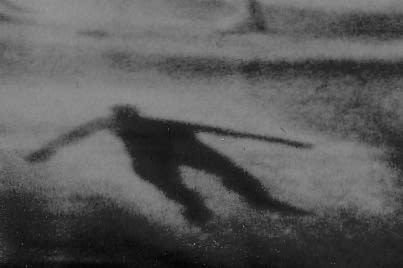
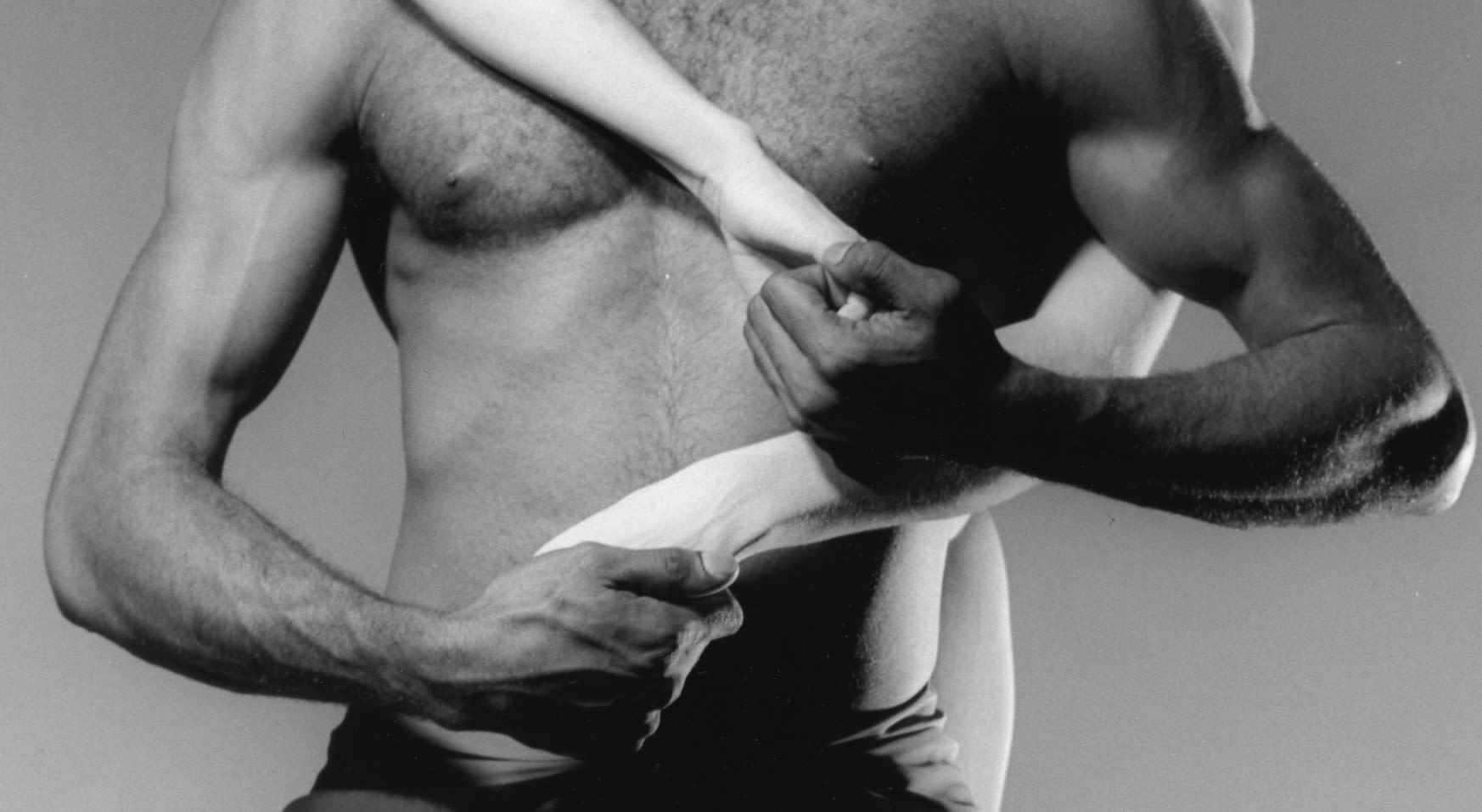
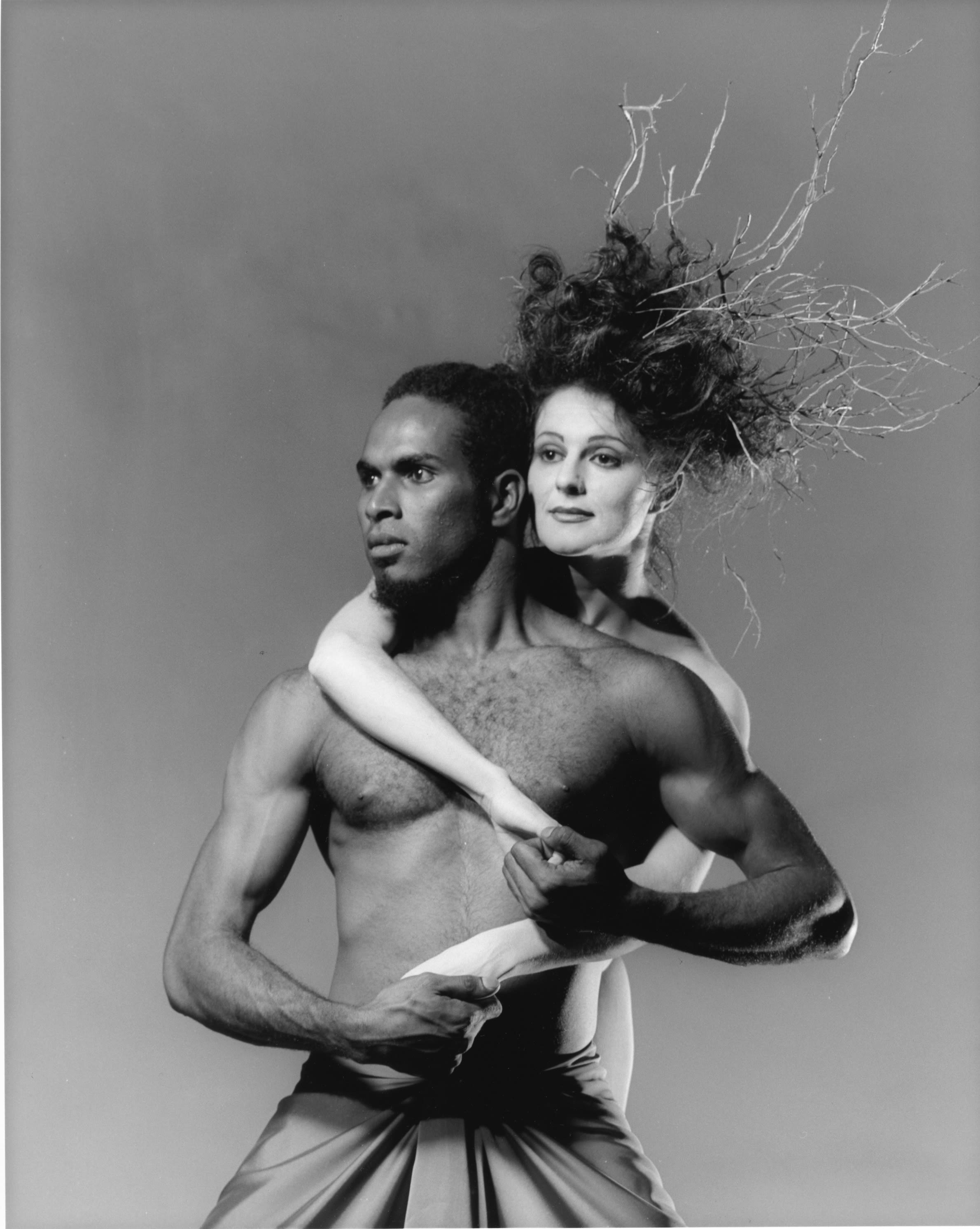
In 2008, The Australian Ballet and Bangarra Dance Theatre reunited to remount Rites for a highly awaited tour of London and Paris. This was the second international tour of this production, which had touched hearts in New York and Washington in 1999.
Performing the work in Paris was especially exhilarating for all involved – taking the work back to its birthplace, paid homage to the music, to Stravinsky and the Ballets Russes. The Parisian audiences generously responded with standing ovations. This was the last season of Rites.
With production seasons spanning from 1997 to 2008, it is interesting to reflect on the incidental timing that saw the trajectory of Rites bookended by the Australian Government’s appraisal of the Stolen Generations.
On 13 February 2008, Kevin Rudd became the first Australian Prime Minister to issue a formal, national apology:
I believe it was absolutely the right thing to do as the first act in my prime ministership in parliament. This had been unfinished business for the nation for a very long time and it was time to bring that chapter to a close.
Kevin Rudd, The Guardian, 2016
With the passing of time, we can look back and reflect. What did the apology mean to Australia and what was its legacy? Did this statement of regret, and acceptance of responsibility, lead to remedy through impactful support and a transformation of systemised injustices?
When you walk with us
you will understand ...
Country is everything
Reciprocity is vital
and through the Songlines
Kinship cradles us into Place
Where we belong
Yolande Brown


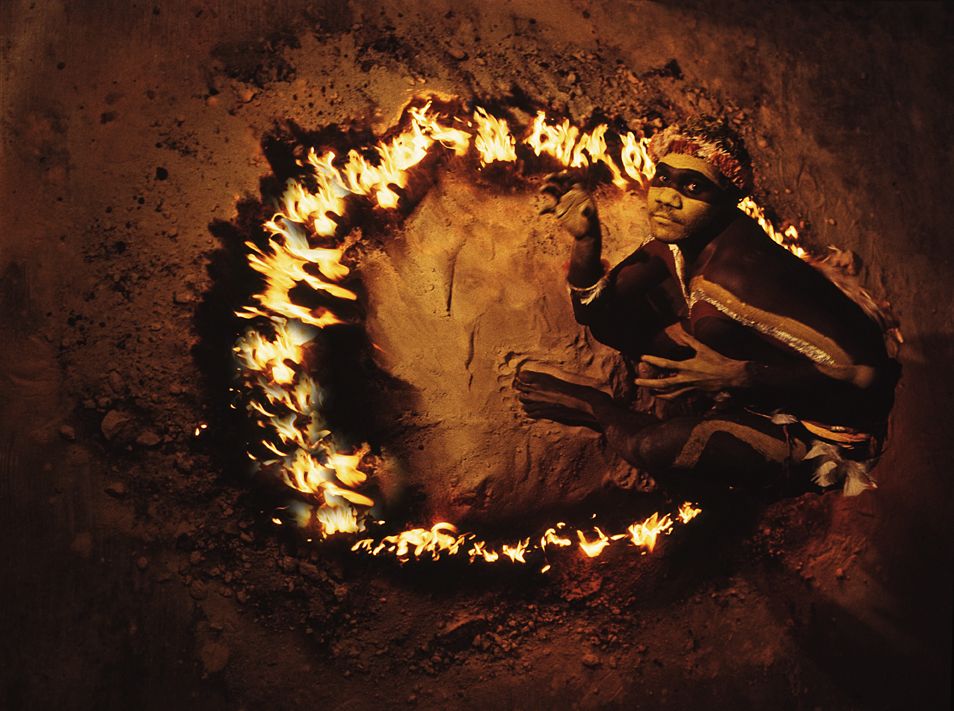
Let’s bring Country on stage, before we do this work.
Stephen Page, 2022
At the New York, City Center, opening night of Rites in 1999, the orchestra, led by Charles Barker, took pause to give space to Yolngu Songman and Wanguri Clan leader, Djakapurra Munyarryun. Stephen Page and Munyarryun had made the call to awaken the performance with a culturally significant Gathering Song. This song was incredibly grounding.
It was important for me to connect everybody as one, then we could go together on this journey and share culture.
Djakapurra Munyarryun, 2022
When 'Australia' was 'settled' in 1788, people did not arrive with intent to learn or to connect through reciprocity. In the theatre that night, people from all different walks of life entered. They carried their day, their backgrounds, their story. This song was spiritual preparation, for dancers, musicians and the audience:
...for the sharing of knowledge, for the building of bridges together, and for walking hand to hand.
Djakapurra Munyarryun, 2022
Every day, as we walk on 'Australian' soil, the choice is ours.
Wanguri Clan song, Yirritja Yolngu language, North East Arnhem Land
Songman: Djakapurra Munyarryun
The North Wind's blowing and we're looking at the water ... it's really calm.
Gathering
Talking
We sit down in a circle...
We're sharing the knowledge ...
We're sharing the cultures ...
All different families coming in from different areas, and we sit down together,
Talking ... learning ...
Sharing the stories in the one place.
LEARN with the Education Resource below for use with secondary students. Contains full curriculum links, images and activities.
WATCH Stephen Page and Wesley Enoch discussing the development and performance of Rites.
Further Reading
The knowledge shared in this exhibition has been drawn from multiple sources and lived experiences. If you would like to read more about First Nations knowledges and perspectives, here is a selection of some of the books that have informed this exhibition.
Steffensen, Victor (2020) Fire Country: How Indigenous Fire Management Could Help Save
Australia, Hardie Grant Explore
Pascoe, Bruce (2018) Dark Emu: Aboriginal Australia and the Birth of Agriculture, Magabala Books
Gay’wu Group of Women (2019) Songspirals : Sharing Women’s Wisdom of Country Through Songlines, Allen & Unwin
Yunkaporta, Tyson (2019) Sand Talk: How Indigenous Thinking Can Save The World, The Text Publishing Company
Neale, Margo (ed.) (2021) The First Knowledges series, Thames & Hudson Australia Pty Ltd
Wasgo, Chelsea (2021) Another Day in the Colony, University of Queensland Press

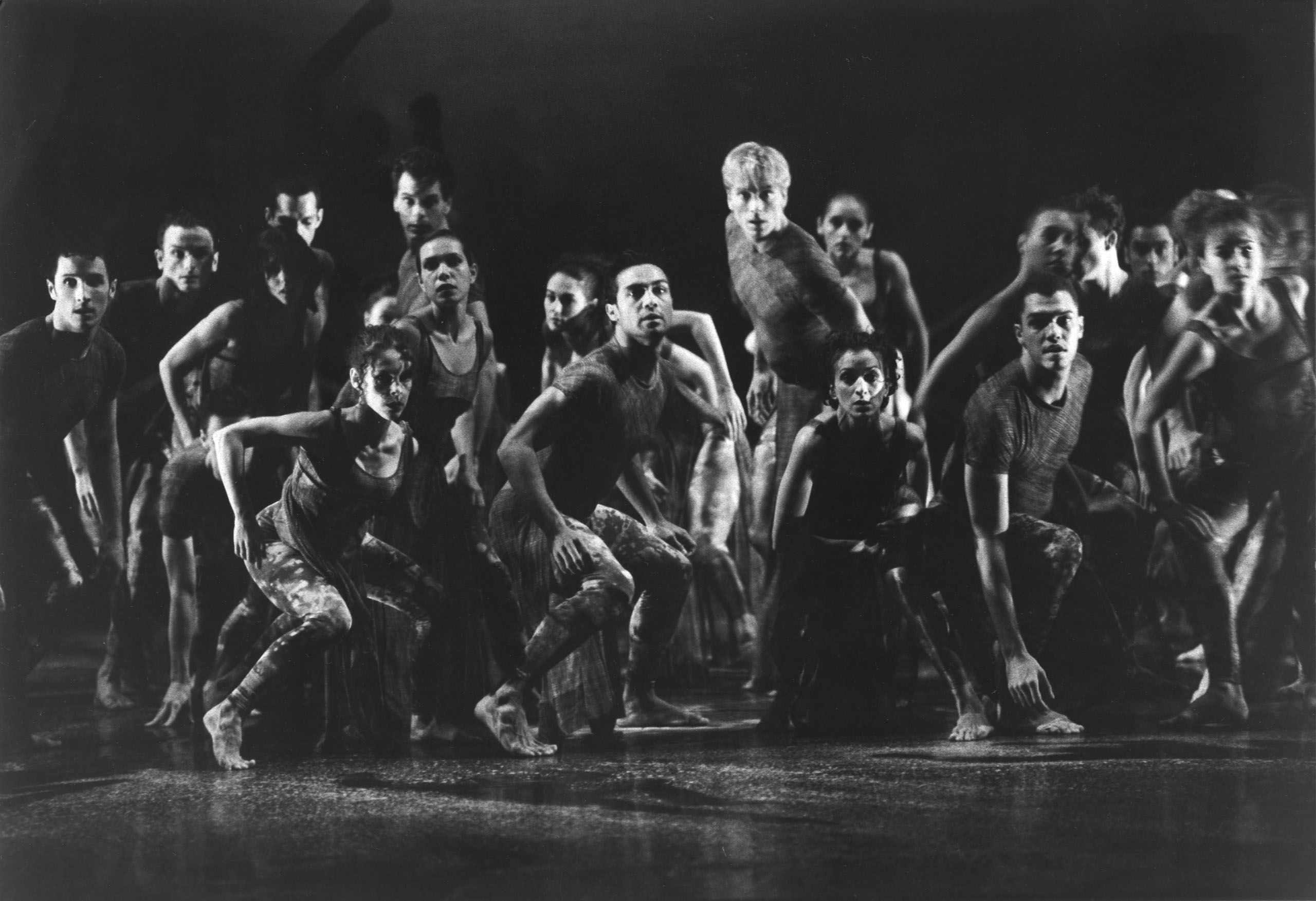
Special thanks
Our thanks are extended to Yolande Brown for her collaborative spirit and dedication to this project. We would also like to acknowledge Lissa Twomey, Cloudia Elder and the team from Bangarra Dance Theatre for their support throughout its development.
Thanks also to David McAllister for his guidance and enthusiasm and to Stephen Page, Frances Rings, Djakapurra Munyarryun, Steven Heathcote, Miranda Barker, Charles Barker, Peter England and Jennifer Irwin for their valuable insights.
We thank The Australian Ballet, and particularly Donna Cusack-Muller, for their continued support and for providing access to photography, footage and costumes in this exhibition.
We also thank Narelle Wilson for detail costume and prop photography.
Acknowledgements
EXHIBITION
Yolande Brown, Creative Lead
Margot Anderson, Curator - Dance & Opera
Chrissy Chan, Coordinator - Rights & Licensing
Megan Williams, Project Manager
Shane Carroll, Education Resource Creation
Cathy Craigie, Editor
PODCAST
Hosts: Yolande Brown and David McAllister
Sound Engineer: Samuel Pankhurst
Guests: Stephen Page, Frances Rings, Djakapurra Munyarryun, Steven Heathcote, Miranda Barker and Charles Barker
Music: Alchemy written by David Page © Sony Music Publishing (Australia) Pty Ltd Licensed by Sony Music Publishing (Australia) Pty Ltd
Gathering Song Wanguri Clan song, Yirritja Yolngu language, North East Arnhem Land Songman Djakapurra Munyarryun, Licensed courtesy of Djakapurra Munyarryun
Moth by Steve Francis, Licensed courtesy of Steve Francis
The Rite of Spring by Igor Stravinsky is used by permission of Hal Leonard Australia Pty. Ltd, exclusive agents for Boosey & Hawkes Music Publishers Ltd. The Rite of Spring performed by Australian World Orchestra, Zubin Mehta Conducting. Courtesy ABC Classic. Licensed by Australian Broadcasting Corporation.
Additional Production: Margot Anderson, Megan Williams and Chrissy Chan
Music Licensing: Chrissy Chan
Transcription: Kaye McGarry
Artists of Bangarra Dance Theatre and The Australian Ballet in Rites, 2008. Photograph by Lisa Tomasetti.
© Arts Centre Melbourne 2022. All rights reserved.
Arts Centre Melbourne have used reasonable endeavours to identify the owners of all copyright materials in this exhibition.
If you have any queries, please contact: researchservice@artscentremelbourne.com.au
